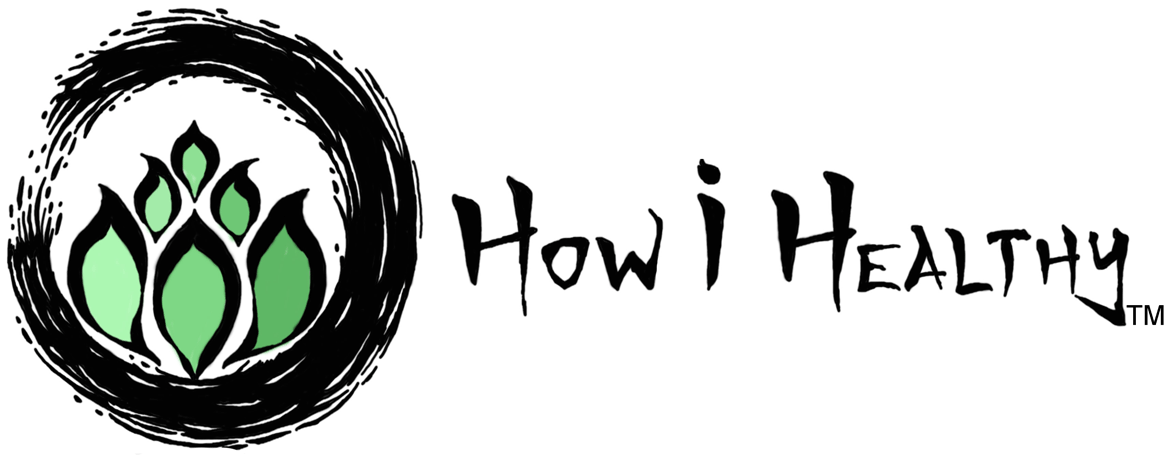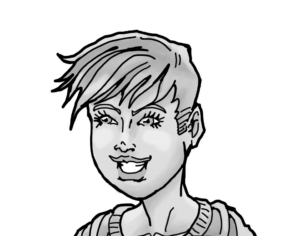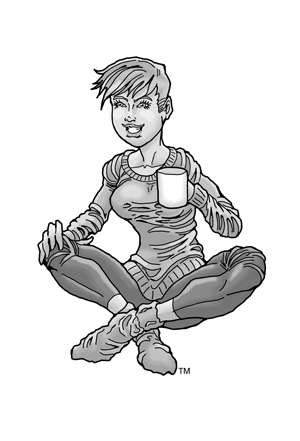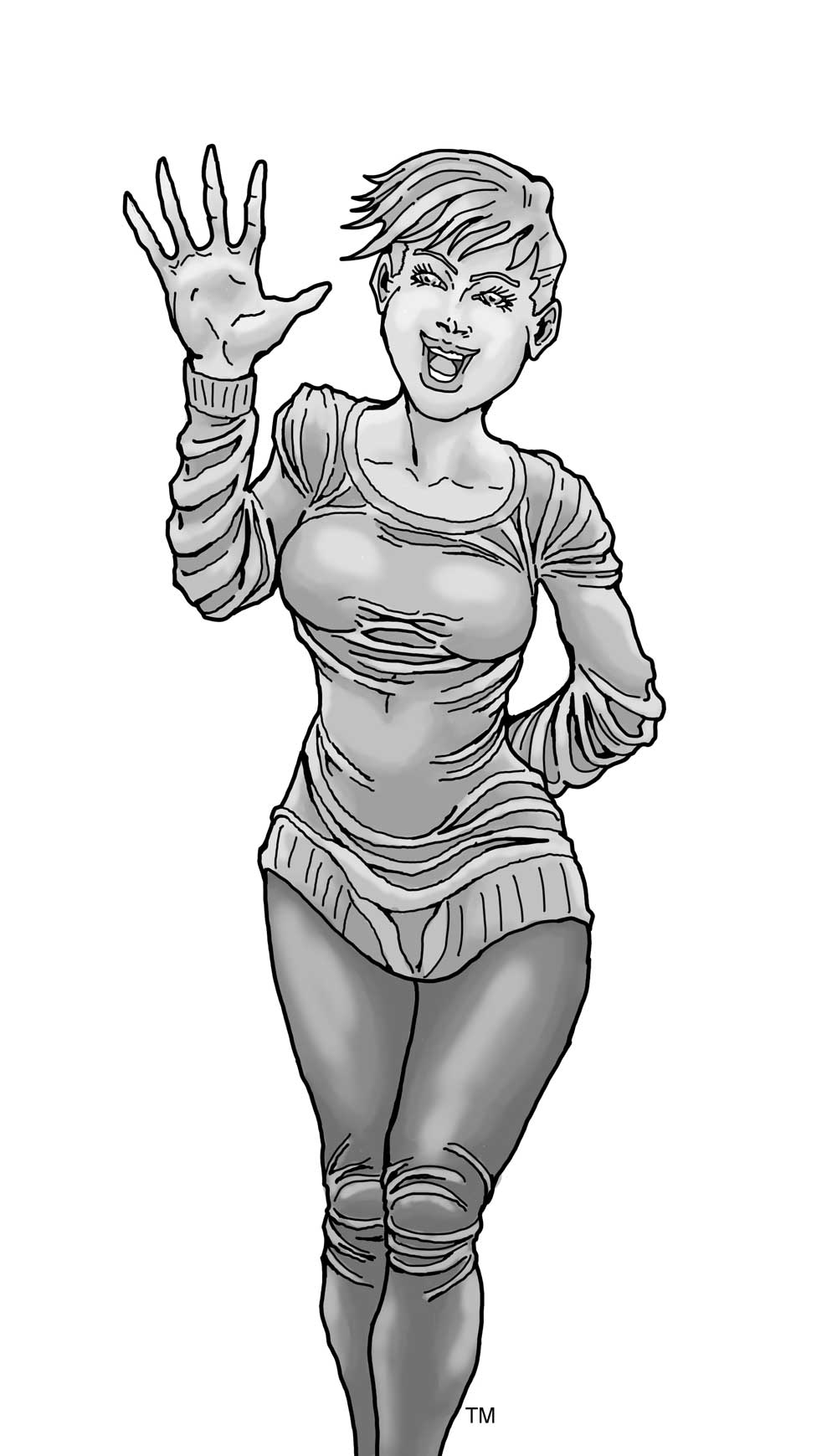In This Article, We'll Cover:
- History & Science of Shoes
- Why the Modern Shoe is Terrible for Our Feet
- Why Indigenous Peoples Were Right All Along
- The Benefits of Minimalist Shoes
- The Benefits of Earthing
- How i Healthy’s Favorite Minimalist Shoes & Why
That cover photo up there? Yep, that’s a shoe.
I own several barefoot / minimalist shoes.
They Are:
And we’ll talk about them all in detail and why they are awesome.
Because here’s the thing, most conventional shoes:
- Are made with forced or child labor in countries lacking worker & environmental protections.
- Are terrible for our feet.
- Aren’t evidence-based despite the marketing claims.
- Pollute the environment.
- Perpetuate harmful consumerism.
But let’s take a few steps back and start at the beginning. Because shoes have an interesting origin story.
Yesterday’s Shoes & Today’s Problems
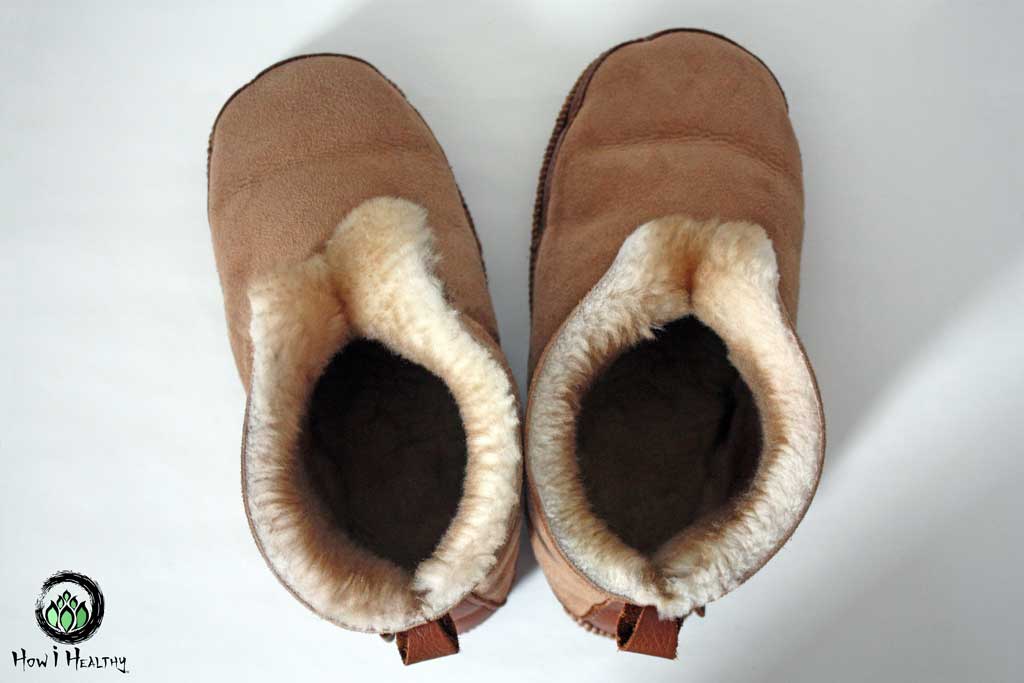
The shoes most folks wear are modern constructs.
Specifically, cushion-filled, arch-supported, toe box cages. And they are nothing like the shoes of history. Instead of “support”, “protection” was the purpose of shoes. (60)
The First Shoes: Protection
“Protection” often translated into thin “footbags” made from leather. These protected feet from the ground, rocks, snow, and desert sands. The thin sole, a single piece of hide in some cases, provided no cushion or support. (65)
In arctic climates, moccasins, mukluks, boots, and kamik were made of skins & furs. These were sewed together with animal sinew thread and often waterproofed with fish oils. Beads and other details reflected individual identity, cultural affiliation, communities, and spirituality. (67)
In other regions of the world, sandals woven plant fibers like papyrus, palms, bark, silk, or hemp were worn. These sandals often protected the feet from the hot ground while keeping the foot cool. (66, 67)
Because of the natural materials of the world’s earliest shoes, very few exist today. (Yay composability!)
Shoes of Status & Power
Cultures, money, demands of life, and globalization changed peoples around the world. Shoes changed as well. Shoes became associated with power, status, culture, and wealth. Shoes divided classes, religions, genders, and cultures. (67)
And in societies around the world, bare feet were a sign of poverty. (67)
Amongst the working classes in some societies, wooden clogs, carved from a single block of wood, protected feet during manual labor. (67)
Wealthier classes, who did not need work shoes, experimented with materials, heel heights, and colors. (67)
Comfort, fit, and practicality stepped aside for power and prestige. Constricting shoes, pointed toe-boxes, and foot binding practices created smaller feet. A desirable trait in some societies. These shoes and practices prevented the wearer from doing work, and in some cases, walk. These limitations only added to the prestige of the wearer. (66, 67)
Shoes of the Industrialized Era & Today
As industrialization revolutionized manufacturing, shoes became cheaper to produce and buy. (67)
Fashionable shoes entered the mainstream markets, and those same markets saw fashion trends.
Fast forward to today’s shoe industry. Until now, shoes were a “fashion statement” or used for “protection” while working.
Enter: athletic shoes. A whole new venture.
The 80s fitness movement spurred shoe innovation.
Words like “comfort”, “support”, “cushioning”, and “reduce injury” popped up. Athletic shoes were different than the shoes of the past. Thick & soft soles cushioned feet while arch supports provided structure.
The harmful impacts of these “innovations” won’t be felt for decades.
And today?
The footwear industry is still harmful, especially to its workers and the environment.
There are a few reasons why:
- A single shoe can have many types of materials, plastics, and metals. This makes recycling and repairs difficult. That’s why ~90% of shoes end up in landfills or are incinerated.
- Brands & symbolism are valued over usability, durability, sustainability, or ethical implications.
- Consumerism and rapidly changing “trends” driven by fast fashion marketing. This means millions of shoes are cranked out every season. Many of which are never sold or worn.
- Cheap products justify slave labor, toxic work environments, and poor quality.
- No extended producer responsibility (EPR) or end-of-life policies for shoes and manufacturers.
- Shoe designs includes extra materials for cushion and support. These interventions are not evidence-based. In fact, shoes of minimal construction, using less heel material & support are better for feet.
- Shoe soles wear down. That means whatever that shoe is made of (often PVC and other plastics) contaminates the environment with microplastics. Yep. Even before they hit the landfill, most conventional shoes harm wildlife and pollute ecosystems.
(4, 61, 62, 63, 67, 68, 69, 70, 71, 72, 73, 74)
The Science of Shoes
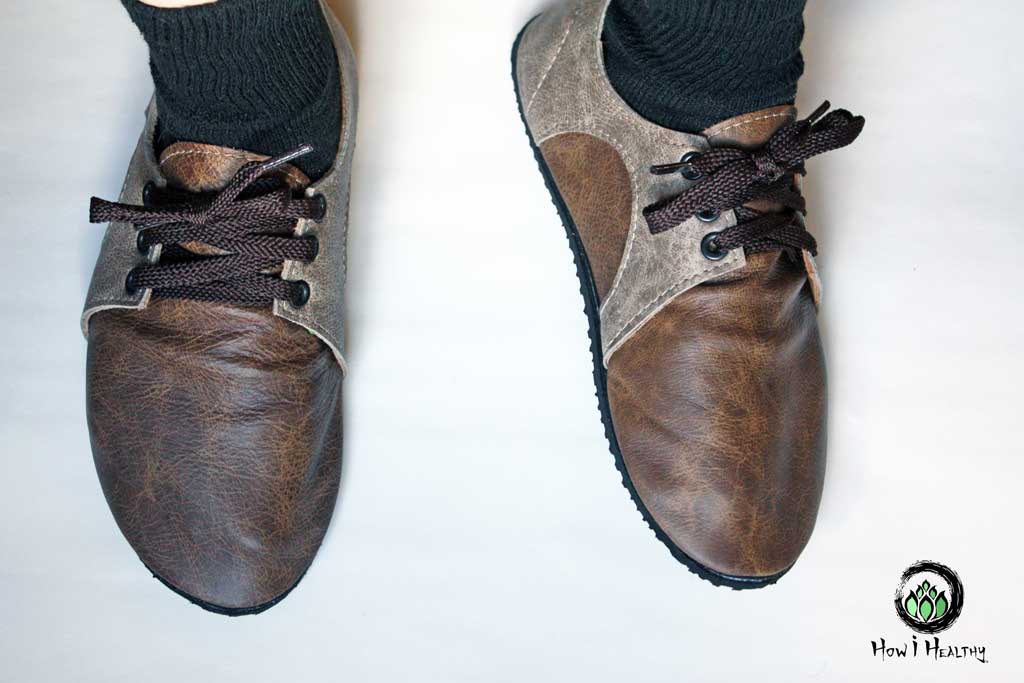
Today’s shoes come in all shapes and sizes. And turns out most shoes aren’t good for our feet.
That said, footwear is unique for each of us, and for some, medically necessary. If you have any questions about your footwear consult your medical provider.
Conventional Shoes
In the medical literature, “conventional shoes” is the term for typical shoes.
“Conventional” is vague, but in general it describes shoes with:
- Built in arch “supports” and cushioning
- Heel elevation (but not a high-heel > 1.5 inches)
- Rigid soles
- Tapered toe boxes
Those sound like pretty good traits, ya? Not so fast.
Conventional shoes are very different from the shoes of the past. And those differences ain’t good.
Why?
Because researchers have found that wearing conventional shoes can:
- Change our gait, often resulting in heel/rear-foot strikes instead of mid-foot strikes. This changes where our bodies feel impact while also increasing impact.
- Change foot shape.
- Decrease sensory information from the soles of our feet.
- Hinder proprioception, or our awareness of self-movement and body position.
- Increase impact on joints while simultaneously alter the distribution of that impact.
- Increase stress on the Achilles tendons.
- Reduce toe spread and spacing.
- Restrict foot & ankle range of motion.
- Weaken foot muscles leading to fallen/flat arches and feet.
(9, 10, 11, 12, 16, 18, 26, 27, 28, 30, 32, 33, 34, 35, 36, 37)
It’s funny how innovation can sometimes make things worse. And the evolution of shoes is a perfect example of “one step forward, two steps back”.
My favorite misconception is “arch support”.
Have you heard that wearing shoes without any arch support causes flat feet?
Well, science says the exact opposite is true.
"Wearing shoes without arch supports causes flat feet."
Nope.
Science and data say otherwise.
That’s because our feet evolved over millennium to support our bodies unaided.
Shoes were for protection, not support. Shoes of the past were flat, allowed for natural movement, and thin. These shoes affected our bodies minimally and allowed for our feet to do the things they do best.
Then enter: Arch-support-marshmallow-shoes to muck it all up.
Buy shoes with “good arch support”.
Restricts/alters movement, less foot muscle engagement, heel-strike walking.
Weakens feet muscles & stresses joints & tendons.
Flat feet & pain.
Buy shoes with even more arch support.
Instead of focusing on increasing foot strength to prevent pain and heal from injury, orthotics, insoles, and foot supports are standard practices.
Temporary supports might be needed for an acute injury, but redeveloping foot strength should be the ultimate goal, according to a piece published in the British Journal of Sports Medicine. (4)
Consult your provider for questions about prescription orthotics or specialty footwear. There might be medical indications for individualized solutions.
High-Heeled Shoes
If conventional shoes with minimal heels are bad, can’t imagine how bad high-heeled shoes are.
Well, actually, we can. And researchers aren’t impressed.
High-heels >1.5 inches:
- Are associated with increased risks of postural disorders, lumbar hyperlordosis, pelvic anteversion, a knee valgus.
- Move our body’s entire gravity center and body alignment.
- Impair motor development of the musculoskeletal system in adolescents.
- Increase stress on foot bones and plantar fascia.
(19, 20)
So, most conventional shoes aren’t that great for our feet. Let’s see what science says about unconventional minimalist shoes.
Minimalist Shoes
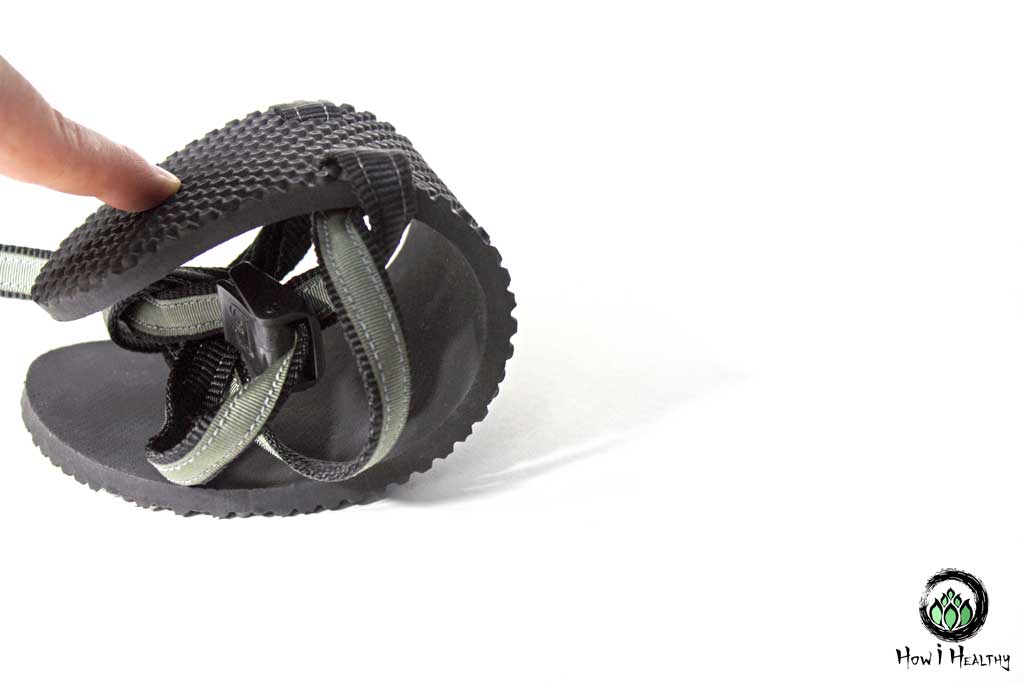
Minimalist shoes are sometimes called “barefoot” shoes. That seems seem contradictory. How can you be barefoot and have shoes on?
Well, you can’t. The word “barefoot” isn’t accurate. Even barefoot shoes do not mimic the biomechanical environmental of barefoot walking. But they do get close. (5, 13, 25)
Nonetheless, you’ll see the word “barefoot shoes” often. Even in this article. Oh well.
Minimalist shoes as described in medical literature are shoes that:
- Allow for mid-foot impacts (like barefoot walking) instead of heel strikes (that conventional shoes cause).
- Highly flexible sole.
- Influence your gait (i.e. walk, run, movement) as minimally as possible.
- Weigh 200g or less.
- “Zero-drop soles”: Meaning the sole is the same thickness from toe to heel. This keeps the angles of the foot/ankle and the length Achilles tendon unaltered.
(22)
With those guidelines, researchers in several studies made similar conclusions on minimalist shoes.
Minimalist shoes can:
- Increase plantar strength leading to higher & stiffer arches.
- Increase range of foot motion and larger toe, feet, and leg muscles.
- Improve balance modulation and mechanoreceptors.
- Improve posture.
- Improve proprioception, or body/foot placement awareness.
- Improve running performance and economy.
- Improve stability and physical function.
(3, 13, 15, 17, 18, 21, 23, 25, 28)
And minimalist shoes might reduce injury risk.
One pilot study found barefoot shoes reduced perceived & reported injuries. But another study on US army soldiers found no injury difference. We need more research to determine if barefoot shoes reduce injury or not. (7, 8)
Indigenous Peoples Knew All Along
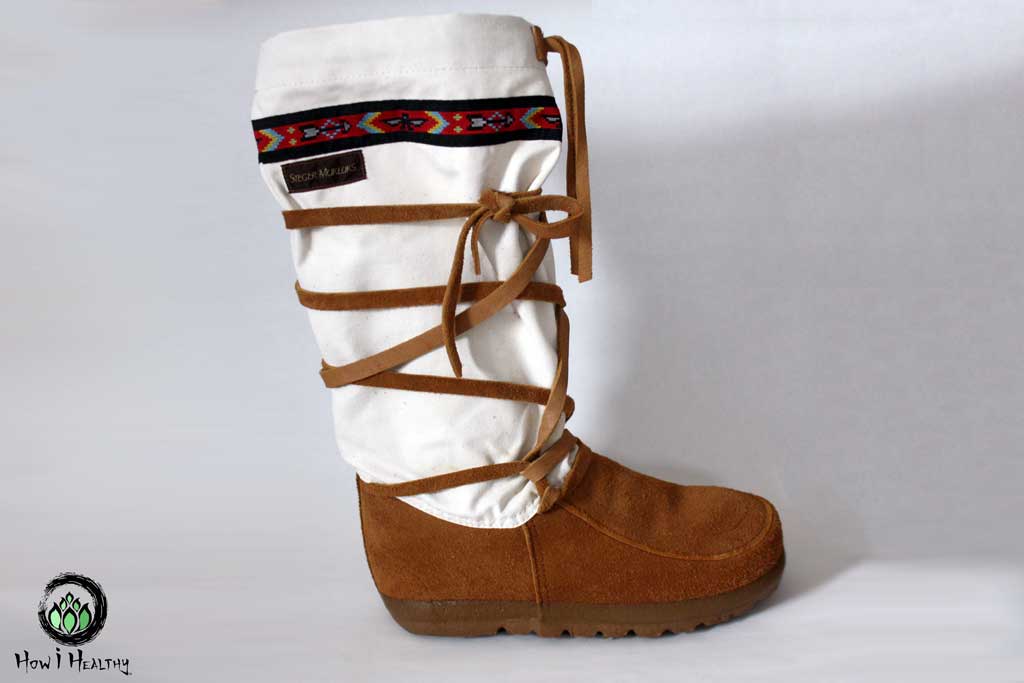
We can’t have a talk about minimalist shoes without acknowledging Indigenous Peoples. They invented the minimalist shoe.
The Rarámuri
First, there’s the Rarámuri People. Their minimalist shoe, the huarache sandal, has been around. And long before any barefoot “discoveries”. The Rarámuri have known for generations the benefits of minimalist shoes.
The Rarámuri are an Indigenous People located in Sierra Tarahumara, a region within Sierra Madre Occidental in northwestern Chihuahua, Mexico. The land is a vista of deep canyons and mountain peaks. And it is home to an ancient running culture treasured by the Rarámuri. (60)
The Rarámuri are globally recognized as some of the best long-distance runners in the world. That’s partially because their running culture survived when many others haven’t. (60)
The Rarámuri people, their running abilities, their running culture, and even their name, has been misrepresented, appropriated, or ignored for years. Even to this day, the Rarámuri name is exploited to sell sandals, energy bars, and other products whose sales to not benefit the Rarámuri.
The first European account of the Rarámuri (wrongly called the “Tarahumans” by those Europeans) in 1893 was full of racial stereotypes about athleticism and pain perception. Dehumanizing claims said the Rarámuri are naturally able to run long distances and are impervious to pain. (60)
For the next century, other anthropologists made similar racist & dehumanizing conclusions. They dubbed the Rarámuri to be the greatest runners in the world. But these anthropologists ignored the hard work, spiritual, social, and functional significance of running in Rarámuri culture. (60)
Opinions, from as recently as 2009, said the Rarámuri are a “near mythical tribe of Stone Age super athletes,”. They live in a land without “crime, war, or theft”. They have “no heart disease, high blood pressure, obesity, drug addiction, depression…”. The utopian list goes on. And it’s inaccurate. (60)
The lands of the Rarámuri are changing as logging, roads, and non- Rarámuri people occupy their ancestral home. Western-style marathons run by non-Rarámuri have replaced traditional Rarámuri footraces. (60)
Narcotics gangs exploit the Rarámuri as drug runners and threaten their way of life. (60)
Hunting has drastically decreased in the last decade too. The Rarámuri historically hunt on foot in huarache sandals, running prey to exhaustion. This is called persistence hunting. Persistence hunting often lasts for hours, even days, while crossing long distances. (60)
Running is more than a means to food though. Rarámuri footraces, still held today, but fewer in number, are community events filled with spiritual significance. The rituals, prayer, and footrace can last for days and connect distant villages. All Rarámuri; children, adults, men and women may run. Exceptional runners often gain social prestige and leadership roles in the community. (60)
To the Rarámuri, running is more than simply running or hunting. Running is a spiritual and social act. But the Rarámuri, or incorrectly, the “Tarahumara”, are exploited in marketing claims and sandal designs. The Rarámuri are often not acknowledged or empowered by these products.
The Maasai
The Maasai, whose name means ‘those who speak maa’, are a semi-nomadic & pastoral people who lived on the most fertile lands of present-day Kenya and South Sudan until the British and German occupations in the early 1900s. (88)
By 1911, a small group of Maasai, without informed consent, signed over more than two-thirds of their peoples’ land. Forcibly exiled from their ancestral homeland, the Maasai settled on less fertile lands in Kenya and Tanzania. (88)
And ever since, the Maasai have pushed on.
Despite seizure of their lands (first by occupiers then later national parks & wildlife reserves), trophy hunting & poaching, wildlife-habitat loss, and water access restrictions, the Maasai population has expanded over the decades. This however does pose a challenge as more Maasai live on ever-shrinking lands. (88, 89)
One thing that is constant for the Maasai is their footwear. Or lack of.
The Maasai, whether hunting or herding, often spend their days barefoot or with a minimal traditional sandal. The Maasai rarely experience foot alignments, especially compared to other cultures, according to the medical literature. (90, 91)
Not surprising given how great barefoot walking is for feet.
Also not surprising? A company appropriated the Maasai’s culture, name, and foot health legacy.
After visiting the Maasai, a Swiss man founded Masai Barefoot TechnologyTM (MBT).
Note the inaccurate spelling of ‘Maasai’. Great start.
It gets worse.
The shoes resemble nothing of the Maasai sandal.
Instead, the super cushioned sneaker has a rounded sole (like a rocking chair) that induces a rocking motion. The round-bottom shoe creates an environment of instability. The wearer must then counter that instability to balance. This engages many muscle groups, including the core, and according to the company, can reduce knee and back pain. (92)
A systematic review of MBT footwear found that while the shoes did change the lower limb biomechanics in several studies, whether or not the change is therapeutically beneficial is still too be determined. (92)
Regardless of if the shoes do what they claim too, Masai Barefoot TechnologyTM has nothing to do with the Maasai People. Let alone empower them. It’s simply an example of a misuse (and misspelling) of their name.
First Nations & Indigenous Peoples
We’re about to talk about moccasins.
The very word ‘moccasin’ is problematic.
Indigenous Peoples across present day North America wore soft-sole leather shoes. Nations like Ojibwe, Lakota, Seneca, Iroquois, Métis, Navajo, and Cherokee. Just to name a few. But the hundreds of nations who wore soft-sole leather shoes didn’t call them moccasins.
‘Moccasin’ is an Algonquian word from the Powhatan language makasin, which traces to the Proto-Algonquian word maxkeseni, meaning shoe. (93)
The Algonquian were amongst the first to encounter Europeans, and the Europeans wrongly called all soft-soled leather shoes moccasins from then on.
So, to call an Indigenous shoe a moccasin is a huge overgeneralization started & perpetuated by white invaders. Every nation has their own word for a soft-sole shoe.
In Onöndowa’ga:’, for example, gayo:wa’ö:weh is the name for a soft-soled shoe. (93)
And although the name moccasin lumps many types of shoes together, the uniqueness of each shoe cannot be overgeneralized.
Moccasin styles, artisanship, beadwork, seams, and leatherwork are as diverse as the cultures they came from. (93)
This diversity is further lost as non-Indigenous companies monetize on moccasin designs. These shoes, and the companies that make them, often don’t acknowledge or empower Indigenous communities or artists.
Or if they do, it’s only to appropriate a nation’s name.
The Cherokee Nation’s name, for example, is plastered to cars and shoes alike without the Nation’s consent. (94)
The Navajo Nation’s name was slapped onto a line of panties featuring “tribal” patterns. (96)
Despite the overgeneralized name and rampart cultural appropriation, the moccasin is an excellent barefoot shoe with soft-soles and a zero-drop heel. And the Indigenous Peoples and First Nations knew it all along.
The Arctic Peoples
Just as their ancestors did for thousands of years, the Arctic Indigenous Peoples wear thick boots that still allow for barefoot-like movement. (82, 83)
The Arctic peoples comprise of over forty different ethnic groups. The Sámi of Finland, Sweden, Norway, and Northwest Russia. The Nenets, Khanty, Evenk, and Chukchi in Russia. The Aleut, Yup’ik, Gwich’in, Athabaskan, Inuit, and Iñupiat in Alaska. Inuit (Inuvialuit) in Canada. And the Inuit (Kalaallit) in Greenland. (82)
These peoples each have their unique footwear to tackle the arctic climate. Boots, like the Saami Nutukas (The English name adapted from several Sámi languages), Mukluks (Derived from the Yup’ik word maklak, meaning “bearded seal”), or Kamiik (the Inuit word), feature soft & zero-drop soles for optimum maneuverability over the tundra.
Animal skin/hide from seal, reindeer, caribou, or salmon create a waterproof casing, while fur or felted wool insulate. The skin and fur used depended on the wearer’s needs. That often meant the hunter’s needs. Sealskin has better waterproofing qualities, so was optimal for seal hunting and being on the ice. Caribou was warmer and better suited for snow and land hunting. Different dyes, tanning agents, and sewing techniques can further enhance waterproofing qualities. (81, 82, 83)
These soft sole boots flex with the foot, allowing for full range of motion and circulation. Like barefoot walking. The boot and leg shaft also leaves plenty of room for blood flow. No cramped toes or tight laces. There are no arch supports or raised heels, so arctic boots are zero-drop too. (81)
For many Arctic Peoples, Kamiiks, Mukluks, and Nutukas are far more than simply footwear. They are culturally significant. Through decoration and design, a pair of boots can identify the wearer’s and/or seamster’s lineage, gender, trade, home, and more. (83)
Unfortunately, there’s a pattern of exploitation we’ve seen before.
Just like moccasins and huarache, Mukluks and Kamiiks are produced by non-indigenous companies that do not acknowledge or empower Arctic Indigenous Peoples.
I’ve seen companies claiming to empower Indigenous communities by providing a platform for artists to sell their Indigenous-made Mukluks.
The catch? That same company simultaneously sells made-in-China Mukluks too.
And for half the price as the Indigenous-made Mukluks.
Bringing their manufacturing back to their local community would support their Arctic Indigenous Peoples far better than offering a platform were artists compete against cheap mass-produced knockoffs.
But I shouldn’t be surprised. Arctic Indigenous Peoples around the Arctic Circle are exploited.
In Canada, the occupation and resource extraction/exploitation of Inuit lands, structural & system inequalities, forced assimilation through residential and day schools, and relocation of nomad villages into permanent housing has led to a cultural genocide and generational trauma within Inuit communities. (86)
The government of Norway approved (without Indigenous Sámi consent) a wind farm that cuts through Jillen-Njaarke lands. Lands that include vital reindeer pastures and ancestral reindeer migration routes. The 72 wind turbines and their power lines are just the newest offense on a growing list. Mining, hydropower, roads, and railways on Sámi lands already exist. And without consent by the Sámi Peoples or the communities they impede on. (87)
The troubles don’t stop at ignoring Indigenous sovereignty. Climate change is devastating the Arctic region too. And it might never be what it once was. Even if climate change is radically countered. (85)
The average annual warming of the Arctic is more than twice the global mean. With even higher increases in winter. (85)
The rise in temperature has already caused a dramatic loss of Arctic Sea ice. The volume of ice has declined 75% since 1979. (85)
It’s not just the temperature rising either. Precipitation and humidity are also rising. The hotter temperatures, rain, and humidity have attacked the fundamental characterizes of the Arctic ecosystem. (85)
It’s called: the “Greening of the Arctic”. And it’s caused fires in lands that were once tundra, altered flower blooming season & its pollinators, and caused rain-over-snow events that turns snow covered pastures into ice. Over the last 20 years, 50% of wild caribou and reindeer populations in Svalbard have died from mass starvation. The caribou and reindeer can reach vegetation through snow. But when rain (when it should be snow) falls over pastures and freezes, they cannot breakthrough the ice to graze. (84, 85)
And it’s not just greening of the land. The Arctic Ocean has warmed too.
Over 20 new species have entered Arctic waters in response to the warmer water temperatures. And rising CO2 causes acidification of the water. All this devastates ecosystems. From algae up the entire food chain.
Climate change threatens the Arctic Peoples way of life. Arctic Peoples have shorter hunting seasons. Travel over ice is more dangerous as it thins. Entire communities are located on eroding shorelines. Even villages who have voted to relocate their ancestral homes lack the funding to do so. (82)
So, as much as the Arctic Peoples wear Kamiiks, Mukluks, and Nutukas…They might not be able to for long.
Earthing/Grounding
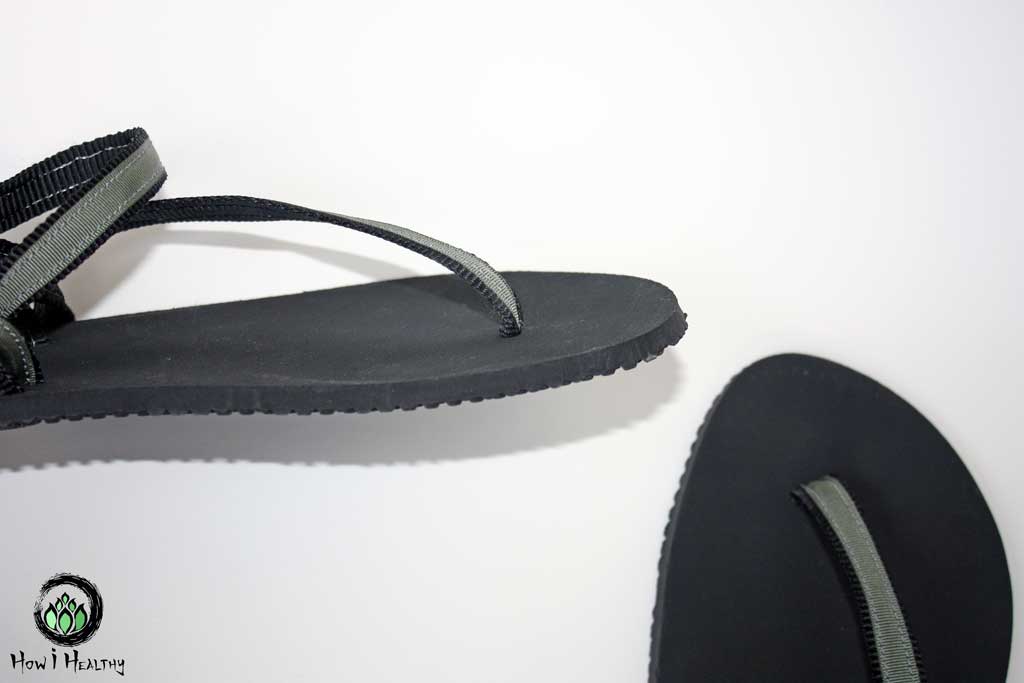
Now, we’ve dove into science of minimalist shoes. And acknowledged the peoples who knew how awesome minimalist shoes were all along.
Let’s take minimalist shoes to the next level!
I’m talking about earthing/grounding.
Earth: A Battery the Recharges Us
The Earth’s surface has electrical energy, specifically free electrons. That’s thanks to lighting strikes, solar radiation, and atmospheric dynamics. And, that means the Earth’s surface has a negative electric charge. (40, 48, 49)
Direct physical contact to this negative energy from free electrons appears to have many health benefits. (40, 43, 45)
Humans have spent centuries connected to the ground. Our bodies evolved to use the Earth’s electrons. But our modern indoor lifestyles & constant shoe wearing are physical barriers. This blocks our bodies connection to the Earth’s electrical surface. (50)
Cutting off the Earth’s supply of electrons might cause a bad chain reaction:
No Earth electrons = electron deficiency.
Electron deficiency = disturbed mitochondria electron transport chains.
Disturbed electron transport = Poor mitochondria energy production.
Poor energy = Poor immune system functioning, increased inflammation, & chronic fatigue.
(51)
Reconnecting with the Earth’s electrons with our bare skin is called “Earthing” or “grounding”. (47, 52)
The two terms are often used interchangeably. But “grounding” is the medical term while “Earthing” is more for shoe marketing. I prefer grounding because it’s easier me to visualize being “grounded” to the Earth, like a lightning rod.
Grounding to the Earth “recharges our batteries” and so much more. (50)
Earth: The Original Anti-Inflammatory
Turns out, Earth’s free electrons do more than help the mitochondria make energy.
Studies concluded that Earthing/grounding:
- Accelerates wound healing and reduces swelling.
- Dramatically reduces inflammation. How? The negatively charged electrons neutralize positively charged free radicals in the body. This reduces inflammation biomarkers, similar to an antioxidant. Even just 30 minutes of Earthing/grounding significantly reduced inflammation in thermal & infrared imaging.
- Improves blood circulation thought the body.
- Promotes faster recovery in muscle damage.
- Reduces blood viscosity and blood pressure by increasing the surface charge of red blood cells.
- Reduces night-time levels of cortisol and improve sleep (when grounding during sleep).
- Reduces pain associated with autoimmune dieses.
- Resynchronizes cortisol hormone secretion to align with a 24-hour circadian rhythm. This helps regulate our sleep-wake cycles.
- Shifts the autonomic nervous systems from sympathetic (fight-or-flight) to parasympathetic (rest & digest) dominance.
(38, 39, 40, 41, 42, 44, 46, 47, 50, 52)
Earthing/Grounding How-To
Despite all these findings, Earthing/grounding doesn’t get respect in clinical practice.
Earthing/grounding is a cost-effective, evidence-based medical intervention. But it’s nearly absent from standards of care or medical recommendations. (47, 50)
Lucky for us, Earthing/grounding is something we can do without a prescription. Here’s how:
- Walk outside barefoot in some dirt, sand, grass, or stone.
- Garden and use your bare hands.
- Use Earthing/grounding conductive systems (mats, pads, mattress systems).
- Wear Earthing/grounding shoes.
Anecdotally, Earthing/grounding has been the best physical therapy for my knee pain. Better than any prescribed PT I’ve done.
My “Barefoot” Experience
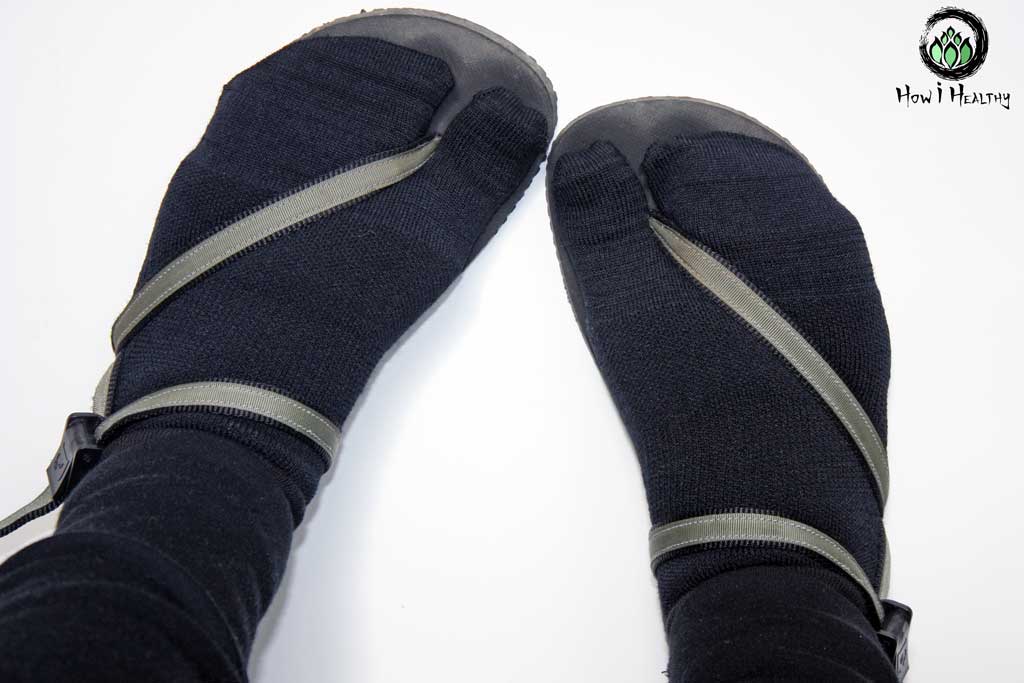
Since my mid 20s, I’ve had knee pain. Flexion, extension, walking, sitting, twisting, jumping, and even bopping to music hurt.
I had all the symptoms of torn ligament or something like it. ACL, meniscus, you name it I heard it all. But my MRIs, CAT scans, and X-ray all came back fine. Physical therapy didn’t help, and most surgeons wanted to do “exploratory surgery”.
Acupuncture and massage therapy was the most helpful, but I eventually hit a plateau. I didn’t need to run or do sport like I used to. I just wanted to be able to walk and sit pain-free.
I didn’t wear cushion sneakers much. But I did wear thick cork sandals with a contoured “arch support” foot bed. When those shoes wore out, I wanted to try something different.
I opted for the thinnest sole and no cotton lining Elemental EarthRunners® sandal.
I like water sports and wanted a quick drying shoe.
I first thing I noticed with my EarthRunners® was my ability to feel the ground. It was as if I gained a new sense. The sense of feet. I could feel every pebble, every shift in elevation, every change in ground texture.
What my feet could “see” was incredible.
My brain and feet were talking to each other in a way I’d never experienced. I mean, I’m barefoot all the time indoors, but outdoors? Not so much. I didn’t think I’d have some instant sensation or anything. After all, barefoot wasn’t new to me. But I noticed an immediate difference.
I could feel everything, and my brain benefited instantly. I felt more balanced, my proprioception improved, and dare I say, I felt “grounded”.
During the first 2 weeks, I gradually increased the distance and duration of my “barefoot” walks/hikes, building up my feet strength.
And wow! It was a work out! Not just for my feet either!
My calves and hamstrings were sore too. But in a good way. There was never any pain or discomfort. Only muscle strengthening soreness.
I was using my body in a way I hadn’t ever done before, which sounds silly, I was just walking. Like I always do! But conventional shoes altered my gait so drastically that when I walked “barefoot”, my muscles weren’t ready for it. After 2ish weeks, as my legs and feet strengthened, the soreness stopped.
And, after three weeks with my EarthRunners®? My knee pain (both active and resting) improved and I favored my other leg less.
After a few months? My arches lifted and pain from regular activity vanished.
That said, I’m not about to go skiing or anything. Twisting/swaying motions hurt my knee still. And, I’m still cautious when exercising (which I do in my EarthRunners® too!).
But I can go about my normal day and not think about my knee. I can carry groceries up a few flights of stairs, hike a mountain, and even watch a movie without pain.
And now, when I put on another pair of shoes that aren’t EarthRunners®, (which is rare, I admit!), I feel unsteady and disorientated. I can’t “see” the ground. My feet-to-brain connection is numbed. Seriously, the first time I went down the stairs in my work boots I nearly fell down them! ( I have since swapped for a more minimal work boot, more below!)
To make my EarthRunners® stretch the seasons, I got these Wool Tabi Socks (handcrafted in the USA) too!
And since my EarthRunners® discovery?
I can’t wear conventional shoes at all.
So, I made the swap to barefoot Slippers by Softstar Shoes, Steger Snow Boots, and Bisgaard Water-proof Boots.
These four shoes can handle anything. Let’s dive in.
My Favorite Shoes
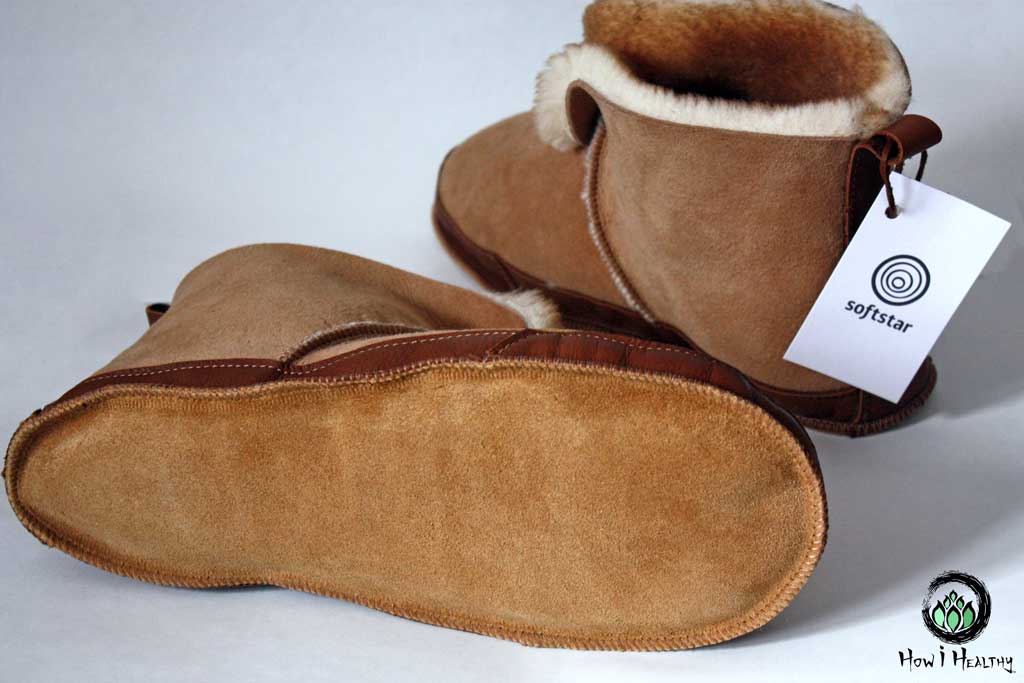
I’m a minimalist, I don’t like owning things. But shoes are one of those things that it’s hard to have just one of.
I live in the south, spend winters up north, and live on acreage with outdoor work year-round. I also like warm feet at home.
There isn’t one shoe that can do it all.
But here are a few shoes that each do their part:
EarthRunners®
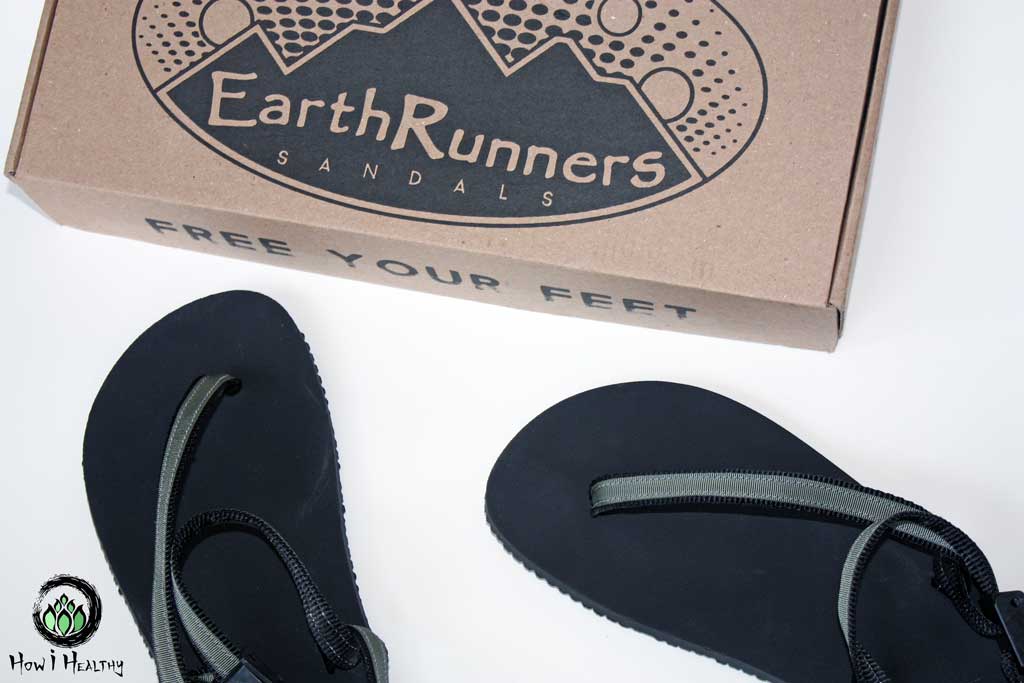
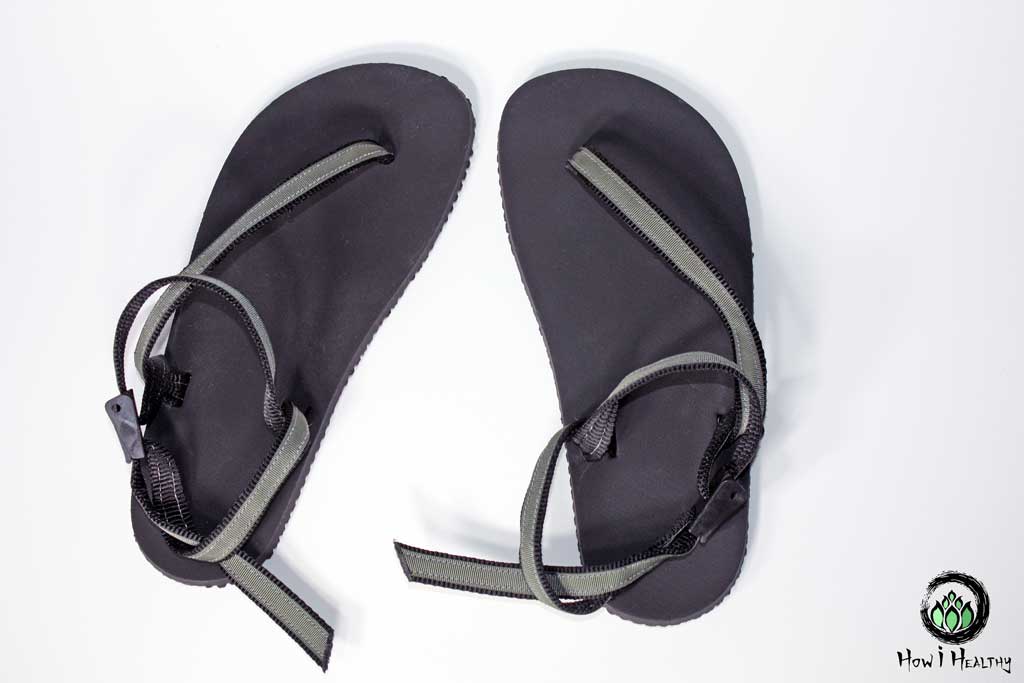
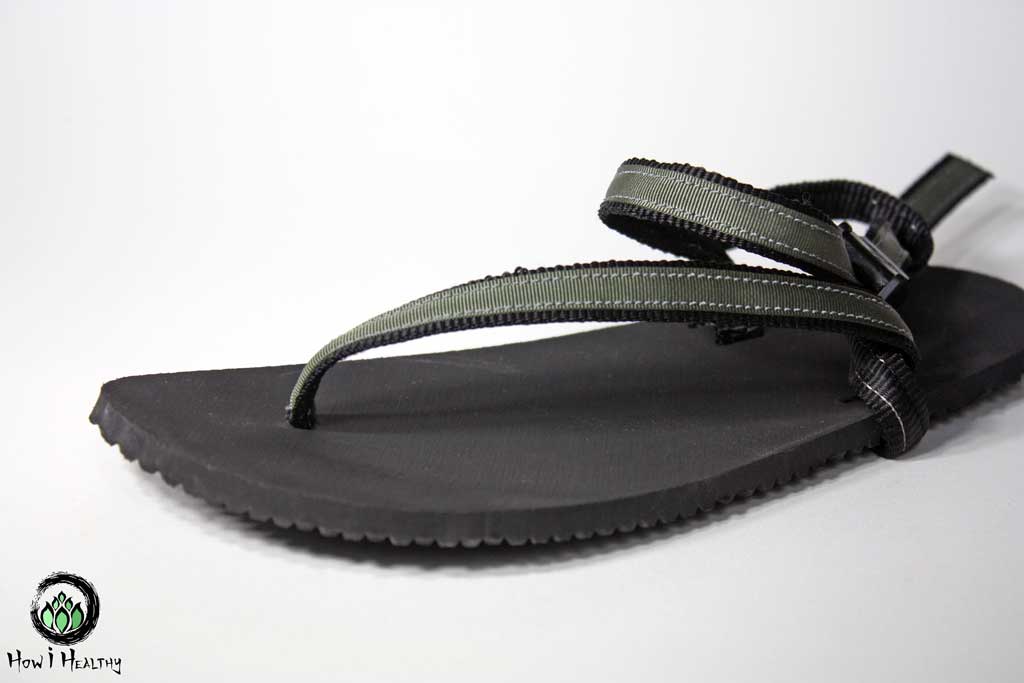

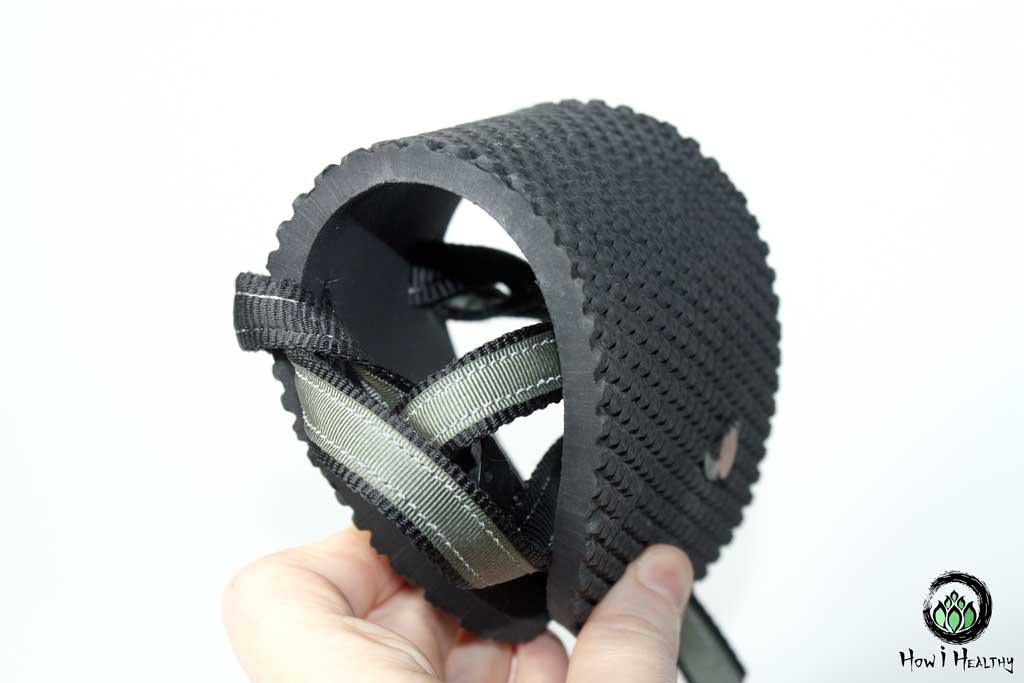

Product Kudos
Origin: Made to order in Sonoma County California.
End of Life: Repairable. Laces and buckle components are available for purchase and extend life. At end of life, recycle through TerraCycle all-in-one box. Recycle cardboard box.
Ingredients/Packaging:
- Elemental EarthRunners® sandal: Cardboard box (no plastic packaging), Conductive nylon laces, conductive copper plug, plastic buckles (made in Santa Cruz, CA), Vibram® rubber soles, GOTS organic dyed (in Los Angeles, CA) cotton foot bed cover.
Why It’s Awesome:
- All the benefits of minimalist & Earthing shoes in one!
- Minimal materials. No shoe walls, toe boxes, extra fabric, or useless “stuff”. Just the things a shoe needs.
- Let’s feet be feet! The movement and range of motion is extremely natural. I forget I have shoes on.
- Compact & lightweight. Even though I’ve never packed these for a trip (they’re always on my feet!), EarthRunners® take up no space and weight practically nothing. Perfect for travel!
- There are only 3 components to this shoe! 2 of which are replaceable. This means fewer opportunities to break, more opportunities to repair, and longer-lasting shoes.
- Perfect for everyday life, exercising, hiking, water sports, and running.
- Plastic-free packaging.
(1, 53)
Company Kudos
- 1% of all sales are donated to True Messages, a non-profit empowering the Rarámuri peoples through sponsoring footraces, trail projects, and youth services.
- EarthRunners® is located in the California coastal mountain foothills. They acknowledge and honor the Rarámuri peoples’ original huarache design.
- Locally and USA made & sourced products whenever possible.
(1, 2)
Softstar Shoes
Product Kudos
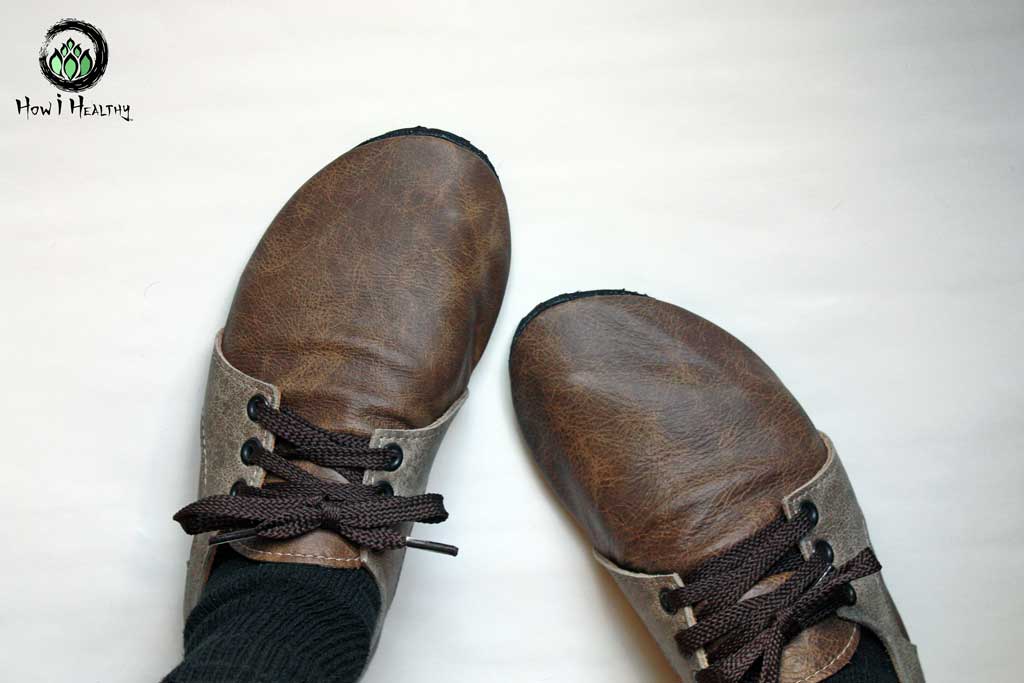

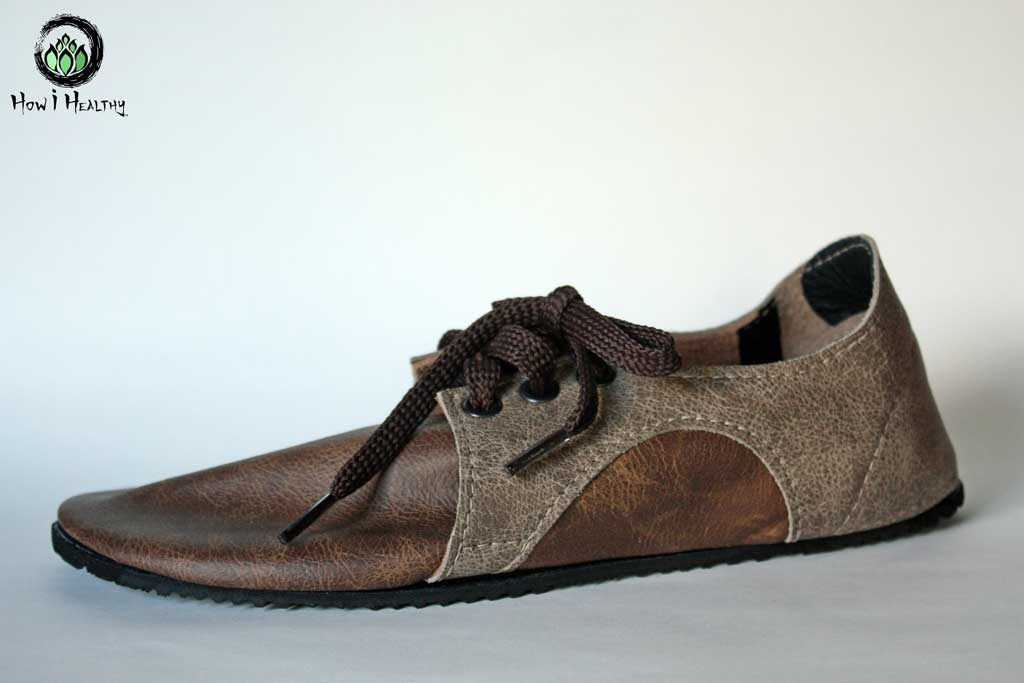




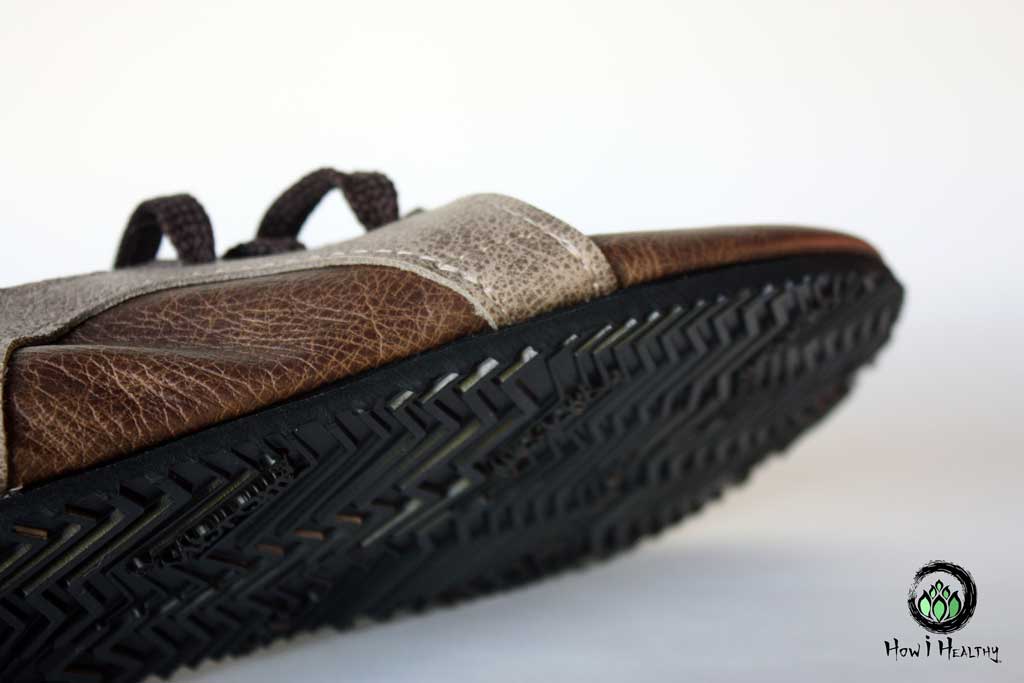

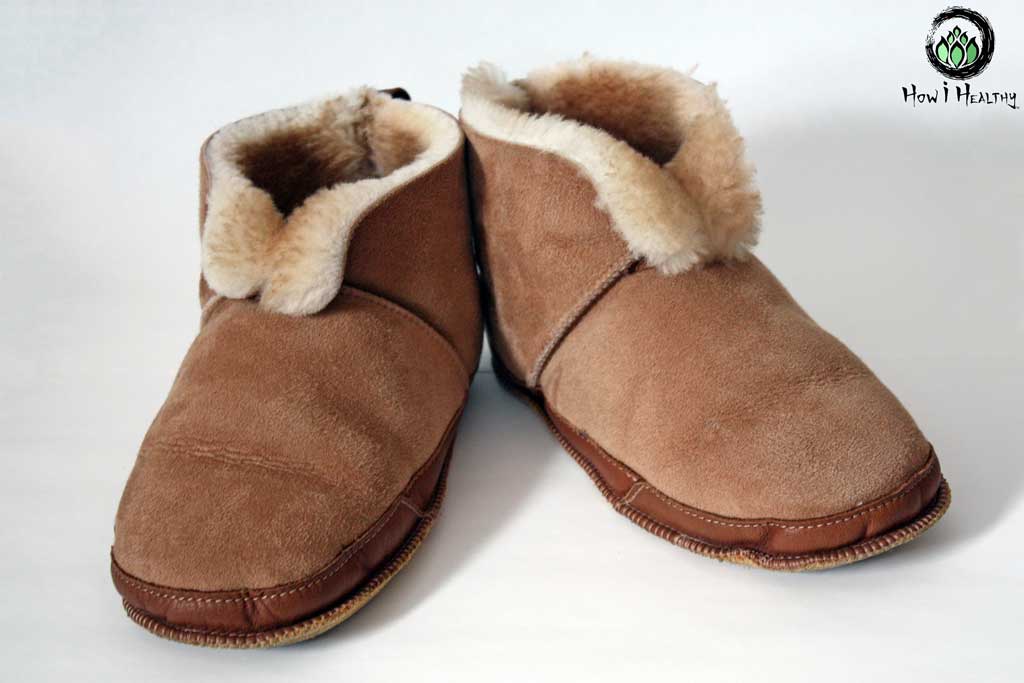

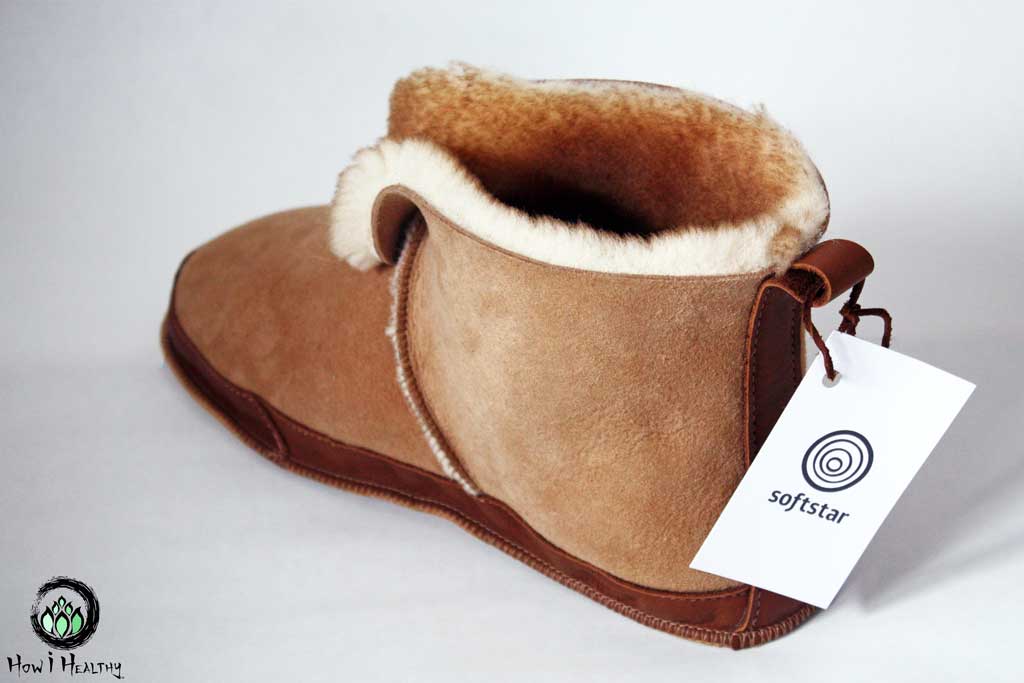

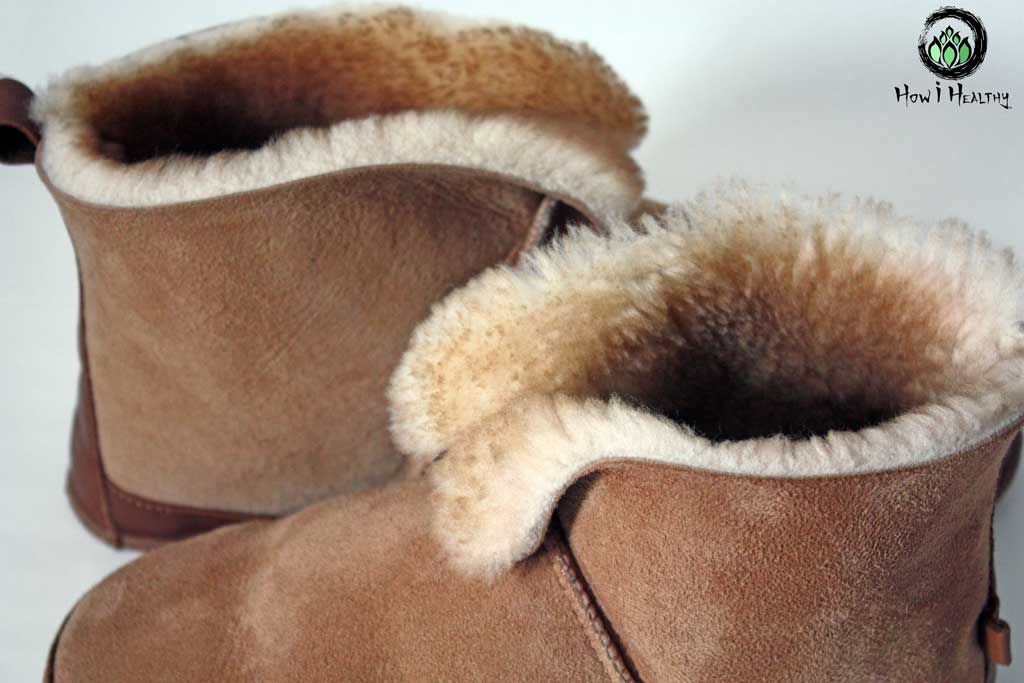

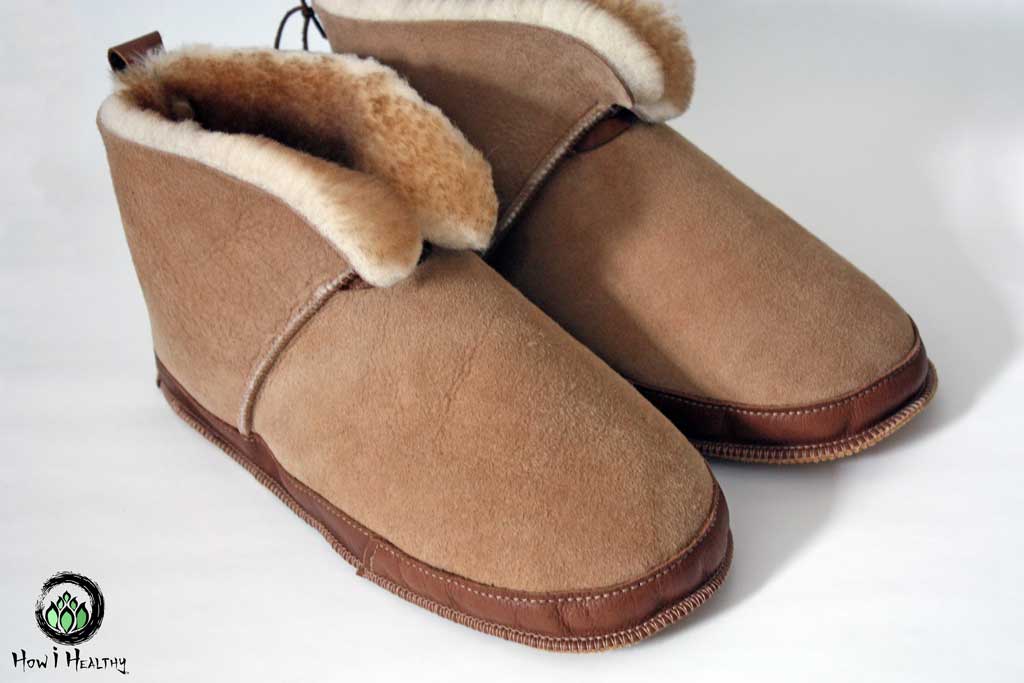

Origin: Made to order in Philomath, Oregon.
End of Life: Post on the Softstar Reuse/Resell page, repair at a cobbler, replace components (laces, insoles, & scraps are available for purchase).
Ingredients/Packaging:
- Softstar Dash RunAmoc: My super awesome leather sneakers! Excellent traction, flexibility, breathability, and fashion statement. These versatile shoes are perfect for the gym, trails, and weddings even! Pretty much the perfect multi-purpose shoe.
- Softstar Sheepskin Slippers: non-toxic, formaldehyde-free, food-grade and/or vegetable dyed, USA-sourced leather, Oeko-Tex Standard 100® merino wool, genuine sheepskin.
- Shipped in paper box with 100% recycled tissue paper.
Why It’s Awesome:
- Absolutely stunning. The craftsmanship is incredible.
- Buttery soft, pushy sheepskin slippers and RunAmoc leather keep feet cozy!
- Good traction on the RunAmoc sneakers. The Vibam soles tackle terrain easily.
- Handcrafted and made to order. Custom sizing available to fit individual needs.
- Neutrally shaped. The slippers can be worn on either foot. That swapability increases slipper life. Just like rotating tires on a car.
- Replaceable sheepskin innersoles increase lifespan for the slippers too.
- Resists odors. Sheepskin is naturally odor resistant. A perfect match for feet!
- Soft suede sole offers grip, no slipping around as I do in socks. Really good for stairs!
- Zero-drop heel. No added arch supports or foam. Just suede and a sheepskin insert. A true barefoot slipper and shoe.
Company Kudos
- American-sourced and made! As one of the few US-based shoe manufactures left, Softstar provides living wages jobs to leather workers and seamsters in Philomath, Oregon.
- Donates regularly to Earth Island Institute. Matches employee donations too.
- Located in a restored 1950s roller skating rink! The restoration including repurposing many materials of the original structure while upgrading the energy efficiency with LED lighting, double pane windows, radiant heat flooring, low-flow plumbing, permeable & petroleum/asphalt-free parking lot. The interior and exterior walls are uncoated wood, free from drywall, paints, treatments, and other coatings. Their restoration won an award for historic preservation too!
- Powered 100% by solar and wind energy.
- Provides an electric car EV charging station to all.
- Provides an employee garden that’s enriched with a company compost bin.
- Uses leather tanned without formaldehyde. Better for the environment and tannery employees.
- Uses food-grade or vegetable-tanned leather for more non-toxic awesomeness.
- Uses non-toxic adhesives, Certified Oeko-Tex Standard 100® merino wool, and genuine untreated sheepskin.
- Voted Top 100 Green Workplaces in Oregon. Every year. Since 2016!
(75, 76, 77)
Steger Mukluks
Product Kudos
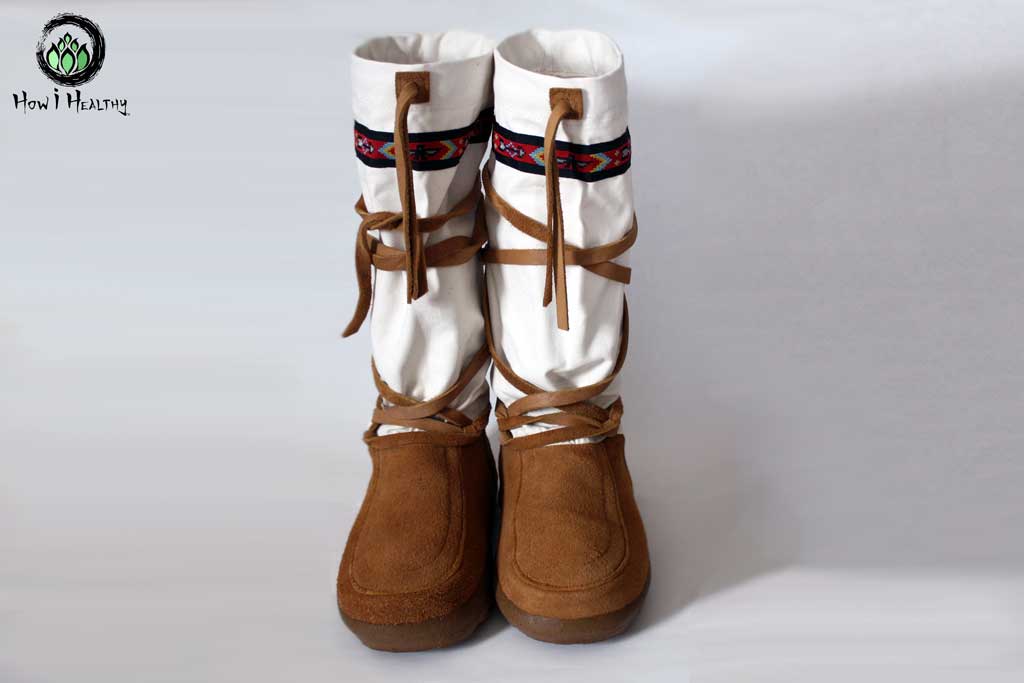

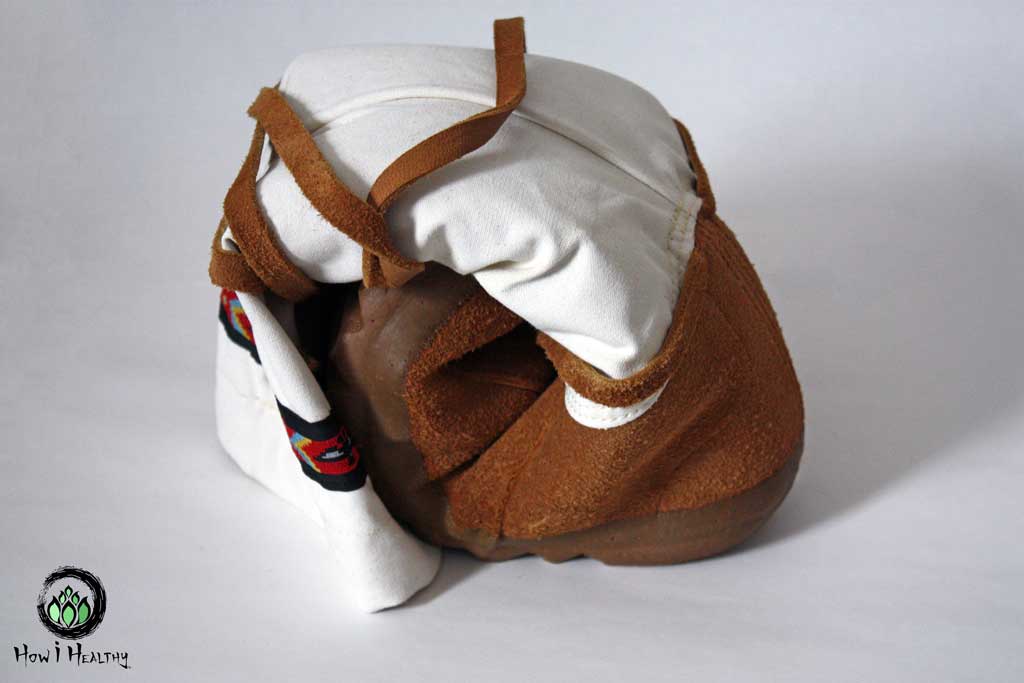


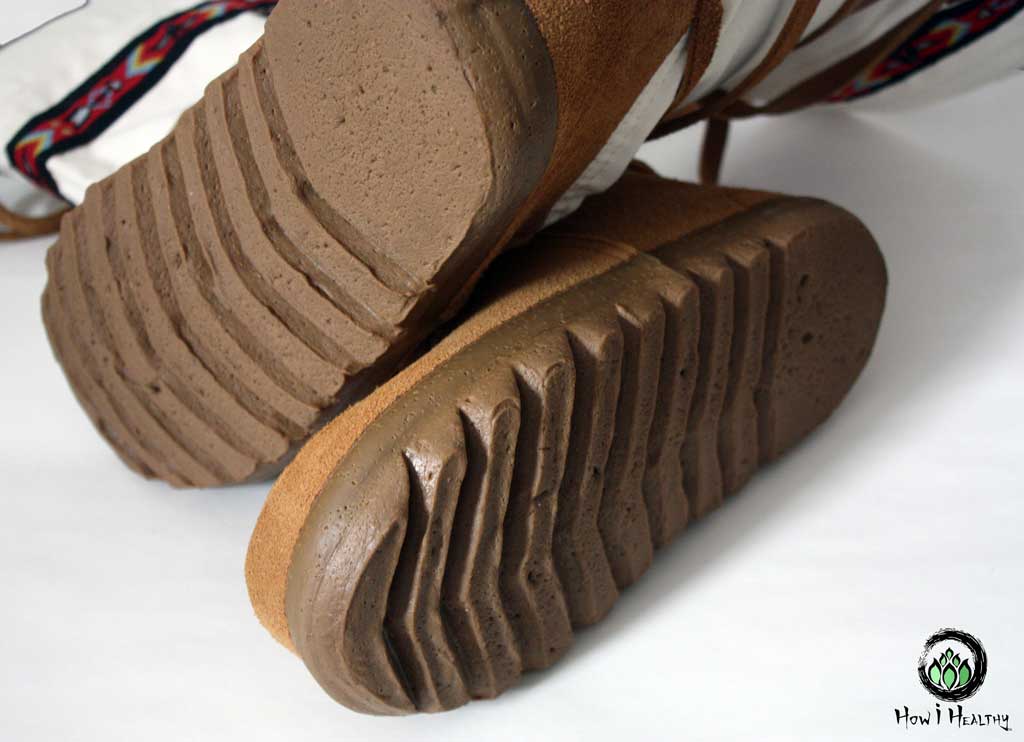

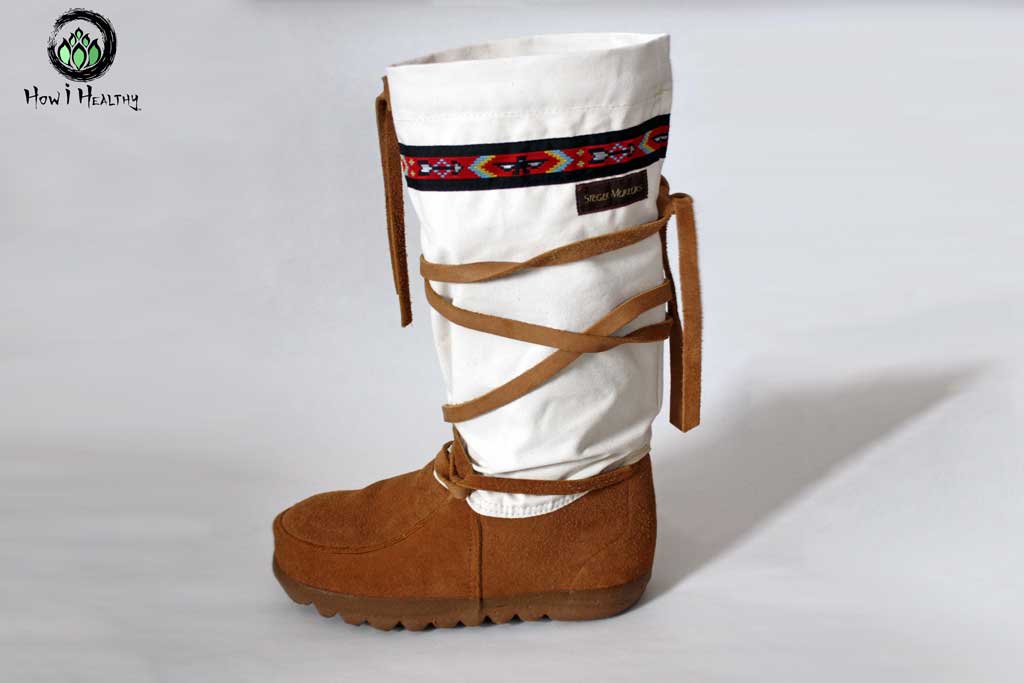


Origin: Ely, Minnesota.
End of Life: Repair at a cobbler, replace components (laces, insoles, liners) available for purchase.
Ingredients/Packaging:
- Steger Snow Boots: Moose hide leather, cotton canvas upper, wool felt liner & insole, natural rubber sole.
- Shipped in plastic-free packaging & cardboard box.
Why It’s Awesome:
- Absolutely, hands down the best snow boots. I’ve never been cold wearing them. Plus, the leather and canvas materials let feet breath, so no sweaty feet either!
- Finally, shoes for my short fat feet! I normally have to wear several sizes too big to get the width my feet need. But not with their awesome double wide option!
- Good ground grip. The tread on the sole is robust, excellent for gripping snow and ice. Many barefoot/minimalist/zero-drop boots have a too-shallow tread, not these practical beauties.
- These boots (size depending) weigh in under a pound per boot. That’s less than half the weight of conventional boots. That’s a load off your lower back. I can tromp around for hours in these without getting sore.
- I can wiggle all my toes! No cramped feet. The leather is buttery and supple. It bends to my foot movement, not the other way around.
- Neutrally shaped. These can be worn on either foot. This is not only great for foot freedom, it also increases shoe life. Like rotating tires on a car, it distributes wear more evenly and increases lifespan of the sole.
- PVC and phthalate-free. Instead, these boots rock natural rubber & leather. That’s important because soles wear down. Which means whatever that sole is made of contaminates the ground. Shoes made of plastic and PVC contribute to microplastic pollution. (72, 73, 74)
- Soft flexible soles for maximum ground feel (without sacrificing warmth or traction!). This also lets the whole foot engage while walking, utilizing every foot muscle maximizes blood flow, which keeps feet warm.
- Tall boot makes tromping through snow easy and keeps the lower leg warm.
- Truly zero-drop. No clunky heels here!
- Removable contour arch support.
- Replaceable leather laces, wool insoles, and wool boot liners.
- Snow proof with treatment (Be sure to use a PFAs-free treatment!).
Company Kudos
- American-made boots, one of the few pairs that still is.
- Exceptional quality. These boots could last a lifetime, if not more. Do need a repair? There’s replacement parts for most boots sold.
- Featured in top outdoors magazines with glowing reviews.
- Woman-owned by Patti Steger. She founded the company out of her home back in 1985. Now she produces 10,000 boots a year!
(78)
Bisgaard Neo Thermo Boots
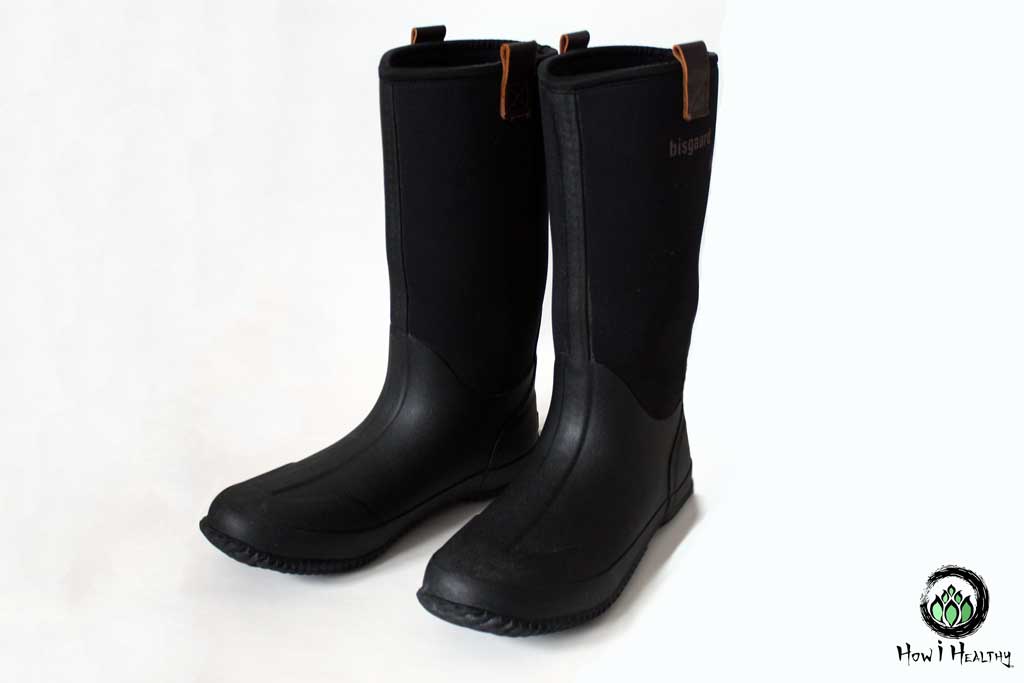




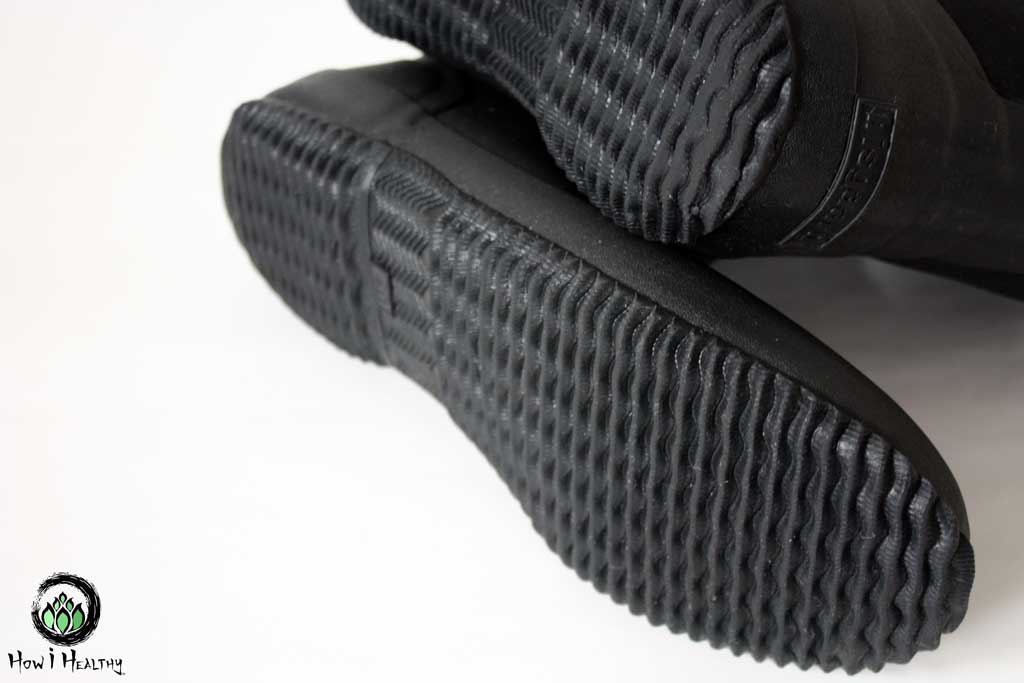

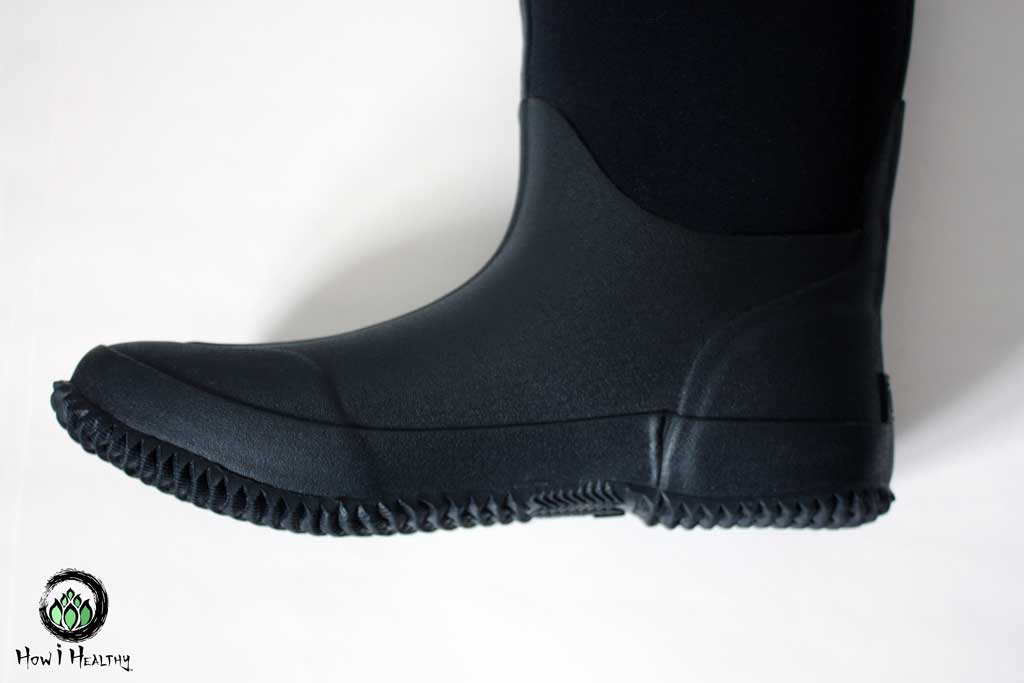

Product Kudos
Origin: Portugal.
End of Life: Exceptional quality and replaceable insoles extend life. Donate if in used condition. Recycle through TerraCylce, both the neoprene and natural rubber can be repurposed.
Ingredients/Packaging:
- Bisgaard Neo Thermo Boots: Natural rubber, neoprene upper, wool insole.
- Packed plastic-free in a reusable cotton drawstring bag with Certified FSC® paper goods.
Why It’s Awesome:
- 100% water-proof.
- Good tread for slippery mud and ice. There are other barefoot/minimalist/zero-drop boots, but they are: 1. Not made in countries with worker/environmental protections, 2. Are PVC (plastic) or 3. Lack a practical tread. I looked at several boots, and while theses are stiffer than I normally wear, the ground grip actually exists. No slipping here. Minimal boots are a constant balance/compromise between materials, ground feel, and traction.
- Made in Portugal. (79)
- PVC and phthalate-free. Instead these boots are natural rubber. That’s important because as soles wear down, whatever that sole is made of breaks down and enters the environment. Shoes made of plastic and PVC contribute to microplastic pollution. (72, 73, 74)
- Replaceable wool insole to extend shoe life.
Company Kudos
- Follow strict EU REACH regulations that ban hazardous substances in both industrial processes, imports, downstream users, and products themselves.
- Low volume and made-to-order production to reduce waste.
- Plastic-free packaging.
- Uses Certified FSC® paper for all shoe boxes, paper, flyers, and hangtags.
(79, 80)
Are They the Best Shoes?
For me, these are all pretty darn close to perfect.
The one piece missing is compostability/materials of some of these shoes.
The EarthRunners® sole is Gumlite Vibram® a compound rubber, the laces are nylon, and the buckle is plastic.
The Bisgaard has a neoprene (aka petroleum-based) upper part.
Plastic, nylon, & neoprene? Those aren’t materials I usually allow into my life.
That said, there ain’t many home compostable shoes out there. I’ve looked.
Sure, there’s a handful of commercially “compostable” or “recyclable bioplastic” shoes out there. But if you’ve read The Greenwashing Guide, then you know those claims are misleading.
That “compostable” shoe is probably still going in the trash because there’s no industrial facility to compost or recycle it. “Compostable” isn’t the same as “home compostable” And surprise! “Recyclable” bioplastic won’t compost in a landfill. And it contaminates non-bioplastic recycling streams. (54, 55, 56, 57, 58, 59)
Bioplastic shoes are often expensive too. Because “eco-friendly” stuff sells. Even when it’s not actually eco friendly.
And, a special note about my Bisgaard boots:
There are other minimal boots available without the neoprene upper, and instead are entirely natural rubber. But I found the traction and grip of the sole lacking. My boots need to handle real muddy and icy situations, not just grocery shopping. It’s a difficult balance between barefoot design, natural materials, and non-slip traction. I opted for Bisgaard Neothermo. They have natural rubber soles still, but neoprene upper. It’s a compromise on materials and ground-feel for traction.
So are there better “eco-friendly” shoes out there?
Maybe, but many come with fine print. Or not enough traction for me.
The shoes I picked, (Bisgaard, Softstar, Steger, and EarthRunners®) have several things Earth-positive things going for them:
- Crafted locally in the USA with locally sourced materials or in the EU following strict REACH standards.
- Easily repairable.
- Parts available; insoles, buckles, and laces are available for purchase.
- Exceptional quality that lasts a lifetime, if not several.
So, until a home compostable, minimalist, zero-drop, Earthing/grounding shoe exists (I know it’s a tall order…) these are the shoes on my feet.
The Takeaway Message
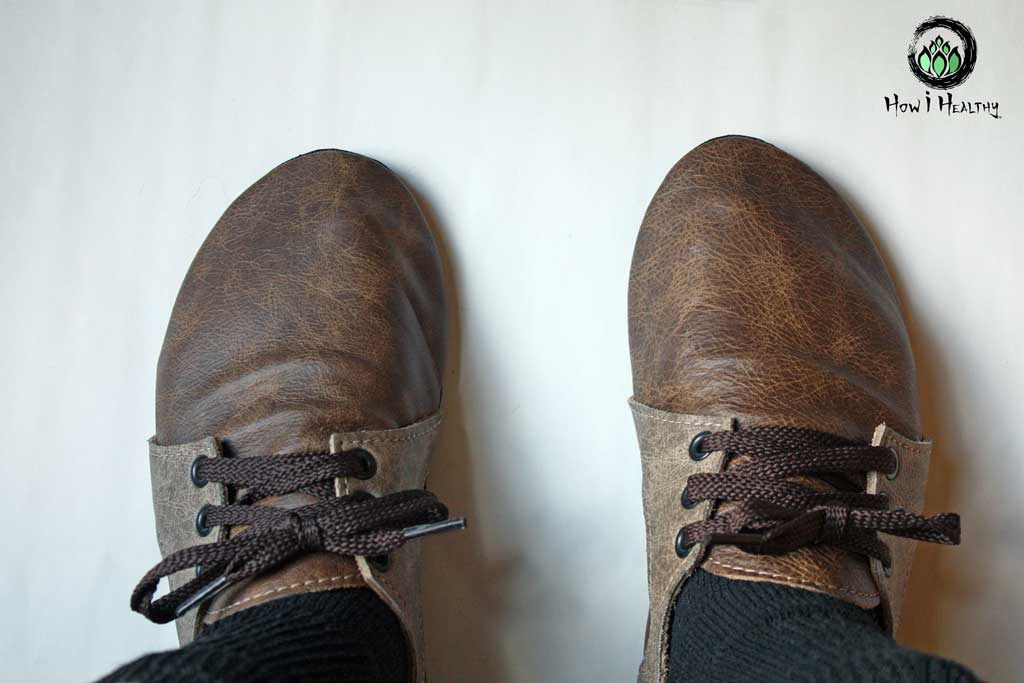


















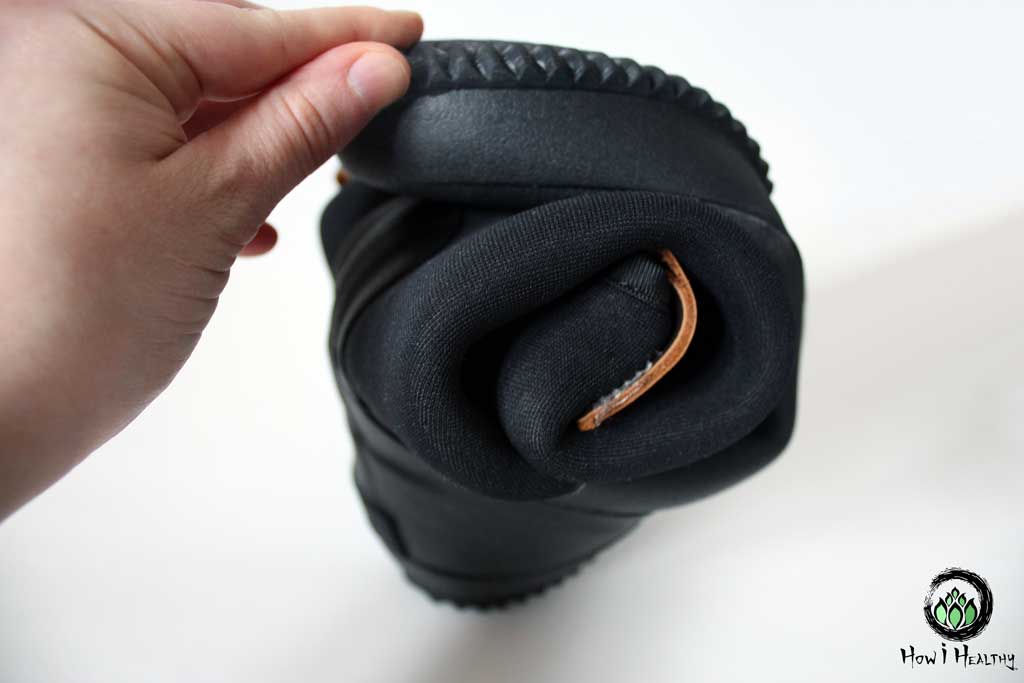

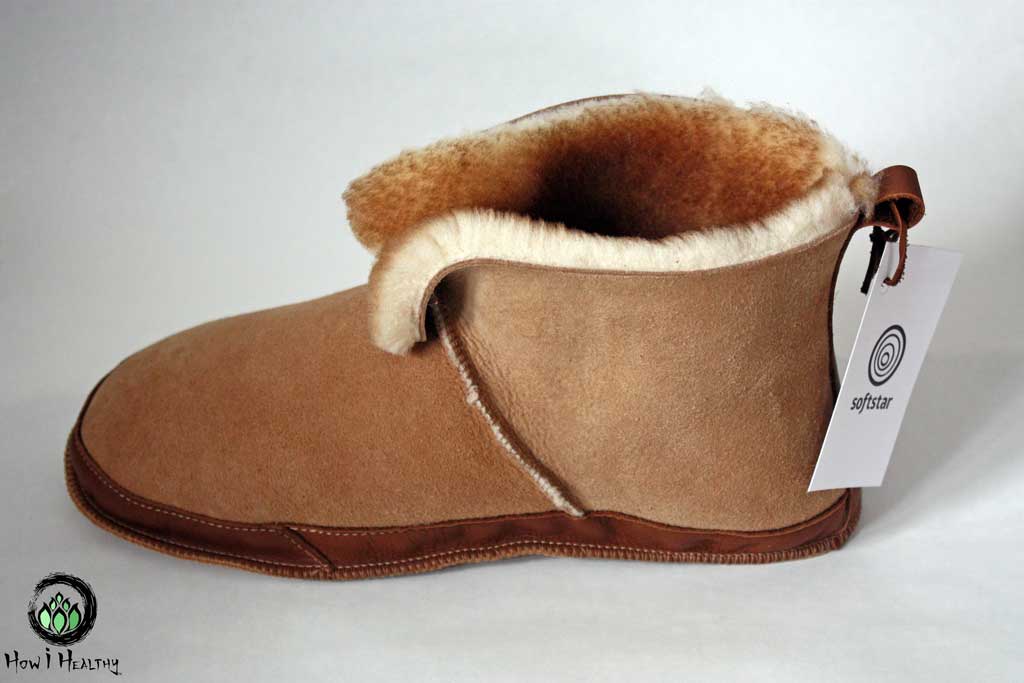



Minimalist shoes are steeped in Indigenous Peoples cultures and backed by science.
Most folk don’t need cushioning or arch support.
In fact, modern day shoes create this need by weakening our feet muscles and causing flat feet. Not to mention change our movement gait, hinder balance, reassign loading impacts, and deaden our proprioception. (9, 10, 11, 12, 16, 18, 26, 27, 28, 30, 32, 33, 34, 35, 36, 37)
It’s an endless (and costly!) cycle of dependency:
- We wear “supportive” shoes. This weakens feet, prevents proper ankle movement, shortens foot & leg muscles, and impacts our natural gait.
- These issues often lead to pain.
- We’re fed marketing lies that arch support and cushion reduces pain.
- We buy even more “supportive” shoes or shoe inserts.
What to do?
Ditch the arch support and cushioning and opt for minimalist shoes.
Minimalist shoes strengthen feet & arches, improve balance & proprioception, and allow for unrestricted/full foot & ankle movement. (3, 13, 15, 17, 18, 21, 23, 25, 28)
But even minimalist shoes are a physical barrier blocking Earth’s electrons into our bodies. Earth’s electrical current acts like an anti-inflammatory and has evidenced-based health benefits. (38, 39, 40, 41, 42, 44, 46, 47, 50, 52)
This is called Earthing/grounding.
A simple solution to literately reconnect with these electrons is a conductive plug in a shoe’s sole. (50)
I spent years with idiopathic knee pain. I didn’t wear cushion sneakers, but I did wear thick cork sandals with a contoured “arch support” foot bed. When those shoes wore out, I got these EarthRunners® Sandals.
And, after one week with my EarthRunners®? My knee pain improved. I favored my other leg less.
After a few months? Most pain vanished, my gait balanced out, and my arches become stronger & higher.
And over the years?
I’ve added more minimalist shoes to my closet!
That’s How i Healthy!
-Artemis
- “Our Story.” Earth Runners Sandals – Reconnecting Feet with Nature, https://www.earthrunners.com/pages/about-us
- “True Messages.” True Messages, https://www.truemessages.org/
- Holowka, Nicholas B et al. “Foot strength and stiffness are related to footwear use in a comparison of minimally- vs. conventionally-shod populations.” Scientific reports 8,1 3679. 27 Feb. 2018, doi:10.1038/s41598-018-21916-7. https://www.nature.com/articles/s41598-018-21916-7
- McKeon PO, Hertel J, Bramble D, et al The foot core system: a new paradigm for understanding intrinsic foot muscle function. British Journal of Sports Medicine 2015;49: https://pubmed.ncbi.nlm.nih.gov/24659509/
- Wallace, Ian J., et al. “Heel Impact Forces during Barefoot versus Minimally Shod Walking among Tarahumara Subsistence Farmers and Urban Americans.” Royal Society Open Science, vol. 5, no. 3, 2018, p. 180044., https://royalsocietypublishing.org/doi/10.1098/rsos.180044. https://royalsocietypublishing.org/doi/10.1098/rsos.180044
- Knapik, Joseph J et al. “Injuries and Footwear (Part 1): Athletic Shoe History and Injuries in Relation to Foot Arch Height and Training in Boots.” Journal of special operations medicine : a peer reviewed journal for SOF medical professionals 15,4 (2015): 102-8. https://pubmed.ncbi.nlm.nih.gov/26630104/
- Ostermann, Katrina et al. “Self-Reported Minimalist Running Injury Incidence and Severity: A Pilot Study.” The Journal of the American Osteopathic Association 116,8 (2016): 512-20. doi:10.7556/jaoa.2016.104. https://www.degruyter.com/document/doi/10.7556/jaoa.2016.104/html?lang=en
- Grier, Tyson et al. “Minimalist Running Shoes and Injury Risk Among United States Army Soldiers.” The American journal of sports medicine 44,6 (2016): 1439-46. doi:10.1177/0363546516630926. https://www.researchgate.net/publication/297662577_Minimalist_Running_Shoes_and_Injury_Risk_Among_United_States_Army_Soldiers
- Franklin, Simon, et al. “Barefoot vs Common Footwear: A Systematic Review of the Kinematic, Kinetic and Muscle Activity Differences during Walking.” Gait & Posture, vol. 42, no. 3, 2015, pp. 230–239., https://doi.org/10.1016/j.gaitpost.2015.05.019. https://pubmed.ncbi.nlm.nih.gov/26220400/
- Branthwaite, Helen, and Nachiappan Chockalingam. “Everyday Footwear: An Overview of What We Know and What We Should Know on Ill-Fitting Footwear and Associated Pain and Pathology.” The Foot, vol. 39, 2019, pp. 11–14., https://doi.org/10.1016/j.foot.2019.01.007. https://www.sciencedirect.com/science/article/abs/pii/S095825921830155X?via%3Dihub
- Lieberman, Daniel E., et al. “Foot Strike Patterns and Collision Forces in Habitually Barefoot versus Shod Runners.” Nature, vol. 463, no. 7280, 2010, pp. 531–535., https://doi.org/10.1038/nature08723. https://pubmed.ncbi.nlm.nih.gov/20111000/
- Kulmala, Juha-Pekka et al. “Running in highly cushioned shoes increases leg stiffness and amplifies impact loading.” Scientific reports 8,1 17496. 30 Nov. 2018, doi:10.1038/s41598-018-35980-6\. https://www.nature.com/articles/s41598-018-35980-6
- Petersen, Evi et al. “Walking barefoot vs. with minimalist footwear – influence on gait in younger and older adults.” BMC geriatrics 20,1 88. 4 Mar. 2020, doi:10.1186/s12877-020-1486-3. https://pubmed.ncbi.nlm.nih.gov/32131748/
- Fuller, Joel T et al. “Effects of a minimalist shoe on running economy and 5-km running performance.” Journal of sports sciences 34,18 (2016): 1740-5. doi:10.1080/02640414.2015.1136071. https://www.tandfonline.com/doi/full/10.1080/02640414.2015.1136071
- Knapik, Joseph J et al. “Injuries And Footwear (Part 2): Minimalist Running Shoes.” Journal of special operations medicine : a peer reviewed journal for SOF medical professionals 16,1 (2016): 89-96. https://pubmed.ncbi.nlm.nih.gov/27045504/
- Zhang, Xini et al. “Acute shoe effects on Achilles tendon loading in runners with habitual rearfoot strike pattern.” Gait & posture 82 (2020): 322-328. doi:10.1016/j.gaitpost.2020.09.027. https://pubmed.ncbi.nlm.nih.gov/33022565/
- Fuller, Joel T et al. “Longer-term effects of minimalist shoes on running performance, strength and bone density: A 20-week follow-up study.” European journal of sport science 19,3 (2019): 402-412. doi:10.1080/17461391.2018.1505958. https://pubmed.ncbi.nlm.nih.gov/30102872/
- Ridge, Sarah T et al. “Walking in Minimalist Shoes Is Effective for Strengthening Foot Muscles.” Medicine and science in sports and exercise 51,1 (2019): 104-113. doi:10.1249/MSS.0000000000001751. https://journals.lww.com/acsm-msse/Fulltext/2019/01000/Walking_in_Minimalist_Shoes_Is_Effective_for.14.aspx
- Silva, Anniele Martins et al. “Implications of high-heeled shoes on body posture of adolescents.” Revista paulista de pediatria : orgao oficial da Sociedade de Pediatria de Sao Paulo 31,2 (2013): 265-71. doi:10.1590/s0103-05822013000200020. https://pubmed.ncbi.nlm.nih.gov/23828066/
- Ahmady, Amir et al. “The effect of various heights of high-heeled shoes on foot arch deformation: Finite element analysis.” Journal of Foot and Ankle Research 7,Suppl 1 A78. 8 Apr. 2014, doi:10.1186/1757-1146-7-S1-A78
- Chen, Tony Lin-Wei et al. “Effects of training in minimalist shoes on the intrinsic and extrinsic foot muscle volume.” Clinical biomechanics (Bristol, Avon) 36 (2016): 8-13. doi:10.1016/j.clinbiomech.2016.05.010. https://jfootankleres.biomedcentral.com/articles/10.1186/1757-1146-7-S1-A78
- Coetzee, Devon R et al. “Conceptualizing minimalist footwear: an objective definition.” Journal of sports sciences 36,8 (2018): 949-954. doi:10.1080/02640414.2017.1346816. https://pubmed.ncbi.nlm.nih.gov/28686085/
- Cudejko, Tomasz, et al. “Minimal Footwear Improves Stability and Physical Function in Middle-Aged and Older People Compared to Conventional Shoes.” Clinical Biomechanics, vol. 71, 2020, pp. 139–145., https://doi.org/10.1016/j.clinbiomech.2019.11.005. https://pubmed.ncbi.nlm.nih.gov/31739197/
- Ridge S.T.et al. Walking in minimalist shoes is effective for strengthening foot muscles. Med. Sci. Sports Exerc. 2018; 51: 104-113. https://pubmed.ncbi.nlm.nih.gov/30113521/
- Franklin, Simon et al. “Modifications in lower leg muscle activation when walking barefoot or in minimalist shoes across different age-groups.” Gait & posture 60 (2018): 1-5. doi:10.1016/j.gaitpost.2017.10.027. https://pubmed.ncbi.nlm.nih.gov/29121509/
- Robbins, S et al. “Proprioception and stability: foot position awareness as a function of age and footwear.” Age and ageing 24,1 (1995): 67-72. doi:10.1093/ageing/24.1.67. https://pubmed.ncbi.nlm.nih.gov/7762465/
- Robbins, S et al. “Foot position awareness in younger and older men: the influence of footwear sole properties.” Journal of the American Geriatrics Society 45,1 (1997): 61-6. doi:10.1111/j.1532-5415.1997.tb00979.x. https://pubmed.ncbi.nlm.nih.gov/8994489/
- Squadrone, R, and C Gallozzi. “Effect of a five-toed minimal protection shoe on static and dynamic ankle position sense.” The Journal of sports medicine and physical fitness 51,3 (2011): 401-8. https://pubmed.ncbi.nlm.nih.gov/21904278/
- Richards, C. E., Magin, P. J. & Callister, R. Is your prescription of distance running shoes evidence-based? J. Sports Med.43, 159–162 (2009). https://pubmed.ncbi.nlm.nih.gov/18424485/
- Bonanno, D. R., Landorf, K. B., Munteanu, S. E., Murley, G. S. & Menz, H. B. Effectiveness of foot orthoses and shock-absorbing insoles for the prevention of injury: a systematic review and meta-analysis. J. Sports Med.51, 86 LP–96 (2017). https://pubmed.ncbi.nlm.nih.gov/27919918/
- Davis, I. S. The Re-emergence of the Minimal Running Shoe. Orthop. Sports Phys. Ther.44, 775–784 (2014). https://pubmed.ncbi.nlm.nih.gov/25211531/
- Theisen, D. et al. Influence of midsole hardness of standard cushioned shoes on running-related injury risk. J. Sports Med.48, 371–6 (2014). https://pubmed.ncbi.nlm.nih.gov/24043665/
- Nigg, B. M., Stefanyshyn, D., Cole, G., Stergiou, P. & Miller, J. The effect of material characteristics of shoe soles on muscle activation and energy aspects during running. Biomech.36, 569–575 (2003). https://pubmed.ncbi.nlm.nih.gov/12600347/
- Pollard, C. D., Ter Har, J. A., Hannigan, J. J. & Norcross, M. F. Influence of Maximal Running Shoes on Biomechanics Before and After a 5K Run. J. Sport. Med.6, 232596711877572 (2018). https://www.ncbi.nlm.nih.gov/pmc/articles/PMC5992812/
- Chan, Z. Y. S. et al. Does maximalist footwear lower impact loading during level ground and downhill running? J. Sport Sci.18, 1083–1089 (2018). https://pubmed.ncbi.nlm.nih.gov/29792108/
- Baltich, J., Maurer, C. & Nigg, B. M. Increased vertical impact forces and altered running mechanics with softer midsole shoes. PLoS One10, 1–11 (2015). https://pubmed.ncbi.nlm.nih.gov/25897963/
- Wit, B. D., Clercq, D., De & Lenoir, M. The Effect of Varying Midsole Hardness on Impact Forces and Foot Motion During Foot Contact in Running. Appl. Biomech.11, 395–406 (1995). https://journals.humankinetics.com/view/journals/jab/11/4/article-p395.xml
- Ghaly, Maurice, and Dale Teplitz. “The biologic effects of grounding the human body during sleep as measured by cortisol levels and subjective reporting of sleep, pain, and stress.” Journal of alternative and complementary medicine (New York, N.Y.) 10,5 (2004): 767-76. doi:10.1089/acm.2004.10.767. https://pubmed.ncbi.nlm.nih.gov/15650465/
- Chevalier, Gaétan et al. “Earthing: health implications of reconnecting the human body to the Earth’s surface electrons.” Journal of environmental and public health 2012 (2012): 291541. doi:10.1155/2012/291541. https://www.ncbi.nlm.nih.gov/pmc/articles/PMC3265077/
- Oschman, James L. “Can electrons act as antioxidants? A review and commentary.” Journal of alternative and complementary medicine (New York, N.Y.) 13,9 (2007): 955-67. doi:10.1089/acm.2007.7048. https://pubmed.ncbi.nlm.nih.gov/18047442/
- Chevalier, Gaétan et al. “Earthing (grounding) the human body reduces blood viscosity-a major factor in cardiovascular disease.” Journal of alternative and complementary medicine (New York, N.Y.) 19,2 (2013): 102-10. doi:10.1089/acm.2011.0820. https://www.ncbi.nlm.nih.gov/pmc/articles/PMC3576907/
- Elkin, Howard K, and Angela Winter. “Grounding Patients With Hypertension Improves Blood Pressure: A Case History Series Study.” Alternative therapies in health and medicine 24,6 (2018): 46-50. https://pubmed.ncbi.nlm.nih.gov/30982019/
- Chevalier, Gaétan et al. “Earthing: health implications of reconnecting the human body to the Earth’s surface electrons.” Journal of environmental and public health 2012 (2012): 291541. doi:10.1155/2012/29154. https://www.ncbi.nlm.nih.gov/pmc/articles/PMC3265077/
- Chevalier, Gaétan et al. “The Effects of Grounding (Earthing) on Bodyworkers’ Pain and Overall Quality of Life: A Randomized Controlled Trial.” Explore (New York, N.Y.) 15,3 (2019): 181-190. doi:10.1016/j.explore.2018.10.001. https://pubmed.ncbi.nlm.nih.gov/30448083/
- Sinatra, Stephen T et al. “Electric Nutrition: The Surprising Health and Healing Benefits of Biological Grounding (Earthing).” Alternative therapies in health and medicine 23,5 (2017): 8-16. https://pubmed.ncbi.nlm.nih.gov/28987038/
- Oschman, James L et al. “The effects of grounding (earthing) on inflammation, the immune response, wound healing, and prevention and treatment of chronic inflammatory and autoimmune diseases.” Journal of inflammation research 8 83-96. 24 Mar. 2015, doi:10.2147/JIR.S69656. https://www.ncbi.nlm.nih.gov/pmc/articles/PMC4378297/
- Menigoz, Wendy et al. “Integrative and lifestyle medicine strategies should include Earthing (grounding): Review of research evidence and clinical observations.” Explore (New York, N.Y.) 16,3 (2020): 152-160. doi:10.1016/j.explore.2019.10.005. https://pubmed.ncbi.nlm.nih.gov/31831261/
- Anisimov, S. V., et al. “On the Generation and Evolution of Aeroelectric Structures in the Surface Layer.” Journal of Geophysical Research: Atmospheres, vol. 104, no. D12, 1999, pp. 14359–14367., https://agupubs.onlinelibrary.wiley.com/doi/10.1029/1999JD900117. https://agupubs.onlinelibrary.wiley.com/doi/abs/10.1029/1999JD900117
- Williams, E. R., and S. J. Heckman. “The Local Diurnal Variation of Cloud Electrification and the Global Diurnal Variation of Negative Charge on the Earth.” Journal of Geophysical Research: Atmospheres, vol. 98, no. D3, 1993, pp. 5221–5234., https://agupubs.onlinelibrary.wiley.com/doi/10.1029/92JD02642.
- Oschman, James L et al. “The effects of grounding (earthing) on inflammation, the immune response, wound healing, and prevention and treatment of chronic inflammatory and autoimmune diseases.” Journal of inflammation research 8 83-96. 24 Mar. 2015, doi:10.2147/JIR.S69656. https://agupubs.onlinelibrary.wiley.com/doi/abs/10.1029/92JD02642
- Oschman JL. In: Mitochondria and cellular aging. Anti-Aging Therapeutics Volume XI.Klatz R, Goldman R, editors. Chicago IL: American Academy of Anti-Aging Medicine; 2008. https://www.remingtonmedical.com/wp-content/uploads/2019/07/Mitochondria-ATP-by-Oschman.pdf
- Sokal, Paweł, and Karol Sokal. “The Neuromodulative Role of Earthing.” Medical Hypotheses, vol. 77, no. 5, 2011, pp. 824–826., https://doi.org/10.1016/j.mehy.2011.07.046. https://www.sciencedirect.com/science/article/abs/pii/S0306987711003641?via%3Dihub
- “Sandal Anatomy: What Are Earth Runners Made of?” Earth Runners Sandals – Reconnecting Feet with Nature, https://www.earthrunners.com/pages/sandalanatomy
- Di Bartolo, Alberto et al. “A Review of Bioplastics and Their Adoption in the Circular Economy.” Polymers 13,8 1229. 10 Apr. 2021, doi:10.3390/polym13081229. https://pubmed.ncbi.nlm.nih.gov/33920269/
- “Plastics Challenge: Improved Compostability of Bioplastics.” Innovative Solutions Canada, Agriculture and Agri-Food Canada (AAFC) and Natural Resources Canada (NRCan), Innovation, Science and Economic Development Canada, 2018, ic.gc.ca/eic/site/101.nsf/eng/00038.html
- “Biodegradable and Compostable Plastics – Challenges and Opportunities.” European Environment Agency, eea.europa.eu/publications/biodegradable-and-compostable-plastics/biodegradable-and-compostable-plastics-challenges
- “Frequently Asked Questions about Plastic Recycling and Composting.” EPA, Environmental Protection Agency, epa.gov/trash-free-waters/frequently-asked-questions-about-plastic-recycling-and-composting
- Narancic, Tanja et al. “Recent Advances in Bioplastics: Application and Biodegradation.” Polymers 12,4 920. 15 Apr. 2020, doi:10.3390/polym12040920. https://pubmed.ncbi.nlm.nih.gov/32326661/
- Sustainable Packaging Coalition. (2021, January). Understanding the Role of Compostable Packaging in North America [PDF]. Retrieved from https://sustainablepackaging.org/resources/.“U.S. DEPARTMENT OF AGRICULTURE Certification Programs.“ USDA National Agricultural Library, 2020, nal.usda.gov/awic/certification-programs
- Lieberman, Daniel E., et al. “Running in Tarahumara (Rarámuri) Culture.” Current Anthropology, vol. 61, no. 3, 2020, pp. 356–379., https://www.journals.uchicago.edu/doi/10.1086/708810. https://www.journals.uchicago.edu/doi/10.1086/708810
- Van Rensburg, Melissa L et al. “Life cycle and End-of-Life management options in the footwear industry: A review.” Waste management & research : the journal of the International Solid Wastes and Public Cleansing Association, ISWA 38,6 (2020): 599-613. doi:10.1177/0734242X20908938. https://pubmed.ncbi.nlm.nih.gov/32181706/
- Moorhouse, Debbie. “Making Fashion Sustainable: Waste and Collective Responsibility.” One earth (Cambridge, Mass.) 3,1 (2020): 17-19. doi:10.1016/j.oneear.2020.07.002. https://pubmed.ncbi.nlm.nih.gov/34173525/
- “’Some Soles Last 1,000 Years in Landfill’: The Truth about the Sneaker Mountain.” The Guardian, 21 Mar. 2020, https://www.theguardian.com/fashion/2020/mar/21/some-soles-last-1000-years-in-landfill-the-truth-about-the-sneaker-mountain
- Pinhasi, Ron et al. “First direct evidence of chalcolithic footwear from the near eastern highlands.” PloS one 5,6 e10984. 9 Jun. 2010, doi:10.1371/journal.pone.0010984. https://pubmed.ncbi.nlm.nih.gov/20543959/
- Ravilious, Kate. “World’s Oldest Leather Shoe Found-Stunningly Preserved.” NATIONAL GEOGRAPHIC NEWS, National Geographic, 2010, https://www.nationalgeographic.com/culture/article/100609-worlds-oldest-leather-shoe-armenia-science
- “A HISTORY OF SHOES: Timeline.” Shoes: Pleasure & Pain Museum Collection, Victoria and Albert Museum, https://www.vam.ac.uk/
- DeMello, Margo. Feet and Footwear: A Cultural Encyclopedia. Greenwood Publishing Group, 2009.
- Rios, Lilian et al. “Quality of life, lifestyle, and working environment of women in the footwear industry.” Revista brasileira de medicina do trabalho : publicacao oficial da Associacao Nacional de Medicina do Trabalho-ANAMT 18,4 390-398. 3 Mar. 2021, doi:10.47626/1679-4435-2020-517. https://pubmed.ncbi.nlm.nih.gov/33688320/
- Chang, CW. Supply chain movement risk in the sneaker industry: an empirical study. Qual Quant(2021). https://link.springer.com/article/10.1007/s11135-021-01166-y. https://link.springer.com/article/10.1007/s11135-021-01166-y
- Foà, Vito, and Irene Martinotti. “Attività calzaturiera, solventi ed effetti sulla salute” [Shoe factory workers, solvents and health]. Giornale italiano di medicina del lavoro ed ergonomia 34,1 (2012): 16-8. https://pubmed.ncbi.nlm.nih.gov/22697025/
- Bukhari, Mohammad Abdullatif et al. “Developing a national programme for textiles and clothing recovery.” Waste management & research : the journal of the International Solid Wastes and Public Cleansing Association, ISWA 36,4 (2018): 321-331. doi:10.1177/0734242X18759190. https://journals.sagepub.com/doi/full/10.1177/0734242X18759190
- Lee, Tae-Yang et al. “Microplastics from shoe sole fragments cause oxidative stress in a plant (Vigna radiata) and impair soil environment.” Journal of hazardous materials 429 (2022): 128306. doi:10.1016/j.jhazmat.2022.128306, https://pubmed.ncbi.nlm.nih.gov/35101758/
- Kim, Lia et al. “Are your shoes safe for the environment? – Toxicity screening of leachates from microplastic fragments of shoe soles using freshwater organisms.” Journal of hazardous materials 421 (2022): 126779. doi:10.1016/j.jhazmat.2021.126779, https://pubmed.ncbi.nlm.nih.gov/34352528/
- Mandal, Sujata et al. “Phthalate migration and its effects on poly(vinyl chloride)-based footwear: pathways, influence of environmental conditions, and the possibility of human exposure.” Environmental science. Processes & impacts 24,10 1844-1854. 19 Oct. 2022, doi:10.1039/d2em00059h, https://pubmed.ncbi.nlm.nih.gov/36107023/
- “Adult Fireside Sheepskin Slipper.” Softstar, https://www.softstarshoes.com/adult-fireside-slipper.html
- “How Our Natural Material Shoes Are Made – Softstar Shoes.” Softstar, https://www.softstarshoes.com/how-made
- “How We Make Our Low Carbon Footprint Shoes – Softstar Shoes.” Sustainability , https://www.softstarshoes.com/sustainable-practices
- “About Steger Mukluks and Moccasins.” Steger Mukluks, https://www.mukluks.com/aboutus.asp
- “FAQs.” Bisgaard Shoes, https://www.bisgaardshoes.com/pages/faqs-1
- “Understanding REACH.” ECHA Regulations, European Chemicals Agency, https://echa.europa.eu/regulations/reach/understanding-reach
- Gadacz, René R. “Mukluk.” The Canadian Encyclopedia, 20 Oct. 2015, https://www.thecanadianencyclopedia.ca/en/article/mukluk
- Artic Indigenous Peoples. University of Lapland Artic Center, https://www.arcticcentre.org/EN/arcticregion/Arctic-Indigenous-Peoples
- Oakes, Jill E., et al. Alaska Eskimo Footwear. University of Alaska Press, 2007.
- Myers-Smith, Isla H., et al. “Complexity Revealed in the Greening of the Arctic.” Nature Climate Change, vol. 10, no. 2, 2020, pp. 106–117., https://doi.org/10.1038/s41558-019-0688-1. https://www.researchgate.net/publication/338951918_Complexity_revealed_in_the_greening_of_the_Arctic
- “Arctic Climate Change.” AN ASSESSMENT BY THE ARCTIC MONITORING AND ASSESSMENT PROGRAMME (AMAP), 2019, https://www.amap.no/
- Hayward, Ashley, et al. “A Review of Health and Wellness Studies Involving Inuit of Manitoba and Nunavut.” International Journal of Circumpolar Health, vol. 79, no. 1, 2020, https://www.tandfonline.com/doi/full/10.1080/22423982.2020.1779524. https://www.ncbi.nlm.nih.gov/pmc/articles/PMC7480607/
- “Saami Council Shares Norwegian Investment Bank’s Concern for Human Rights Violations in Øyfjellet.” The Saami Council , Sámiráđđi, 13 Oct. 2022, https://www.saamicouncil.net/news-archive/storebrandoyfjellet
- “The Maasai Culture and Traditions.” Maasai Wilderness Conservation Trust, http://maasaiwilderness.org/
- Mtuy, Tara B, et al. “The Role of Cultural Safety and Ethical Space within Postcolonial Healthcare for Maasai in Tanzania.” BMJ Global Health, vol. 7, no. 11, 2022, https://doi.org/10.1136/bmjgh-2022-009907. https://pubmed.ncbi.nlm.nih.gov/36356986/
- Choi, Jun Young et al. “Salient features of the Maasai foot: analysis of 1,096 Maasai subjects.” Clinics in orthopedic surgery 6,4 (2014): 410-9. doi:10.4055/cios.2014.6.4.410. https://pubmed.ncbi.nlm.nih.gov/25436065/
- Choi, Jun Young et al. “A comparative study of the feet of middle-aged women in Korea and the Maasai tribe.” Journal of foot and ankle research 8 68. 1 Dec. 2015, doi:10.1186/s13047-015-0126-1. https://pubmed.ncbi.nlm.nih.gov/26628924/
- Tan, Jade M et al. “The effect of Masai Barefoot Technology (MBT) footwear on lower limb biomechanics: A systematic review.” Gait & posture 43 (2016): 76-86. doi:10.1016/j.gaitpost.2015.10.017. https://pubmed.ncbi.nlm.nih.gov/26669956/
- “Moccasins.” SenecaIroquois National Museum, https://www.senecamuseum.org/portfolio/moccasins/
- Chatterjee, Rituparna. “Chief of Cherokee Nation Demands Jeep Stop Using ‘Culturally Appropriated’ Name.” The Independent, Independent Digital News and Media, 23 Feb. 2021, https://www.independent.co.uk/news/world/americas/cherokee-nation-jeep-name-change-b1805939.html
- Treisman, Rachel. “Moccasin Maker Minnetonka Has Apologized for Appropriating Native American Culture.” NPR, NPR, 12 Oct. 2021, https://www.npr.org/2021/10/12/1045373654/minnetonka-moccasins-native-american-cultural-appropriation-apology
- Woolf, Nicky. “Urban Outfitters Settles with Navajo Nation after Illegally Using Tribe’s Name.” The Guardian, Guardian News and Media, 19 Nov. 2016, https://www.theguardian.com/us-news/2016/nov/18/urban-outfitters-navajo-nation-settlement
Want More?
Want a deep dive into the shoe industry and harmful consumerism? Enjoy supporting local bookstores?
Here’s a read that’ll tell the story of shoes and the exploited people who make them:
Foot Work: What Your Shoes Are Doing to the World
By Tansy E. Hoskins
A holistic examination on shoes. Hoskins covers shoes from every angle: cultural influence, environmentalism, feminism, history, identity, industry, policy, production, social impact, and so much more. It’s everything I love in a book.
Packed with data, research, and personal narratives from exploited workers, Foot Work exposes an incredibly wasteful industry. But Hoskins doesn’t leave us hopeless. Instead she offers practical calls to action for consumers, designers, manufactures, and policy makers. It’s a fantastic read that’ll change the way you shop.
Buy at: Bookshop®
